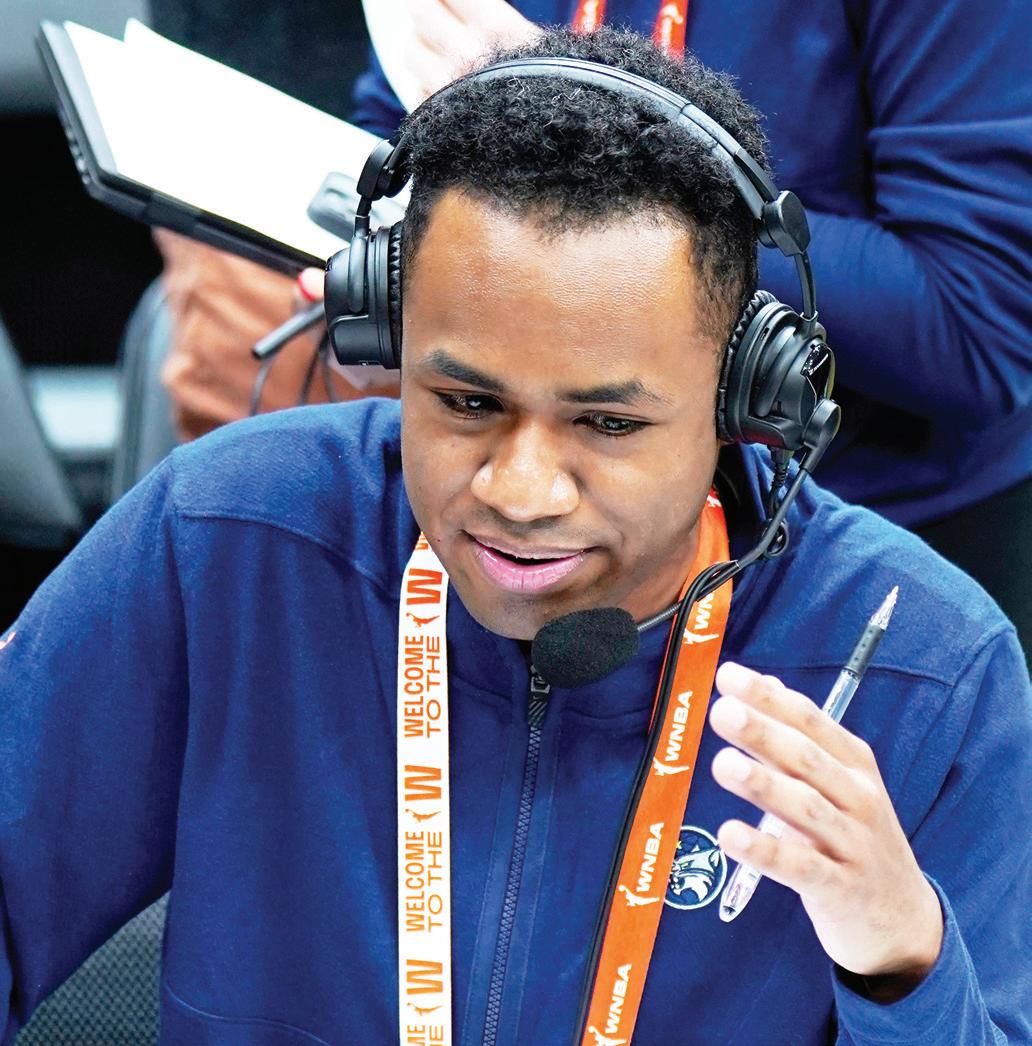

how



how
Jellybean Johnson and star-studded panel take us back to the beginning
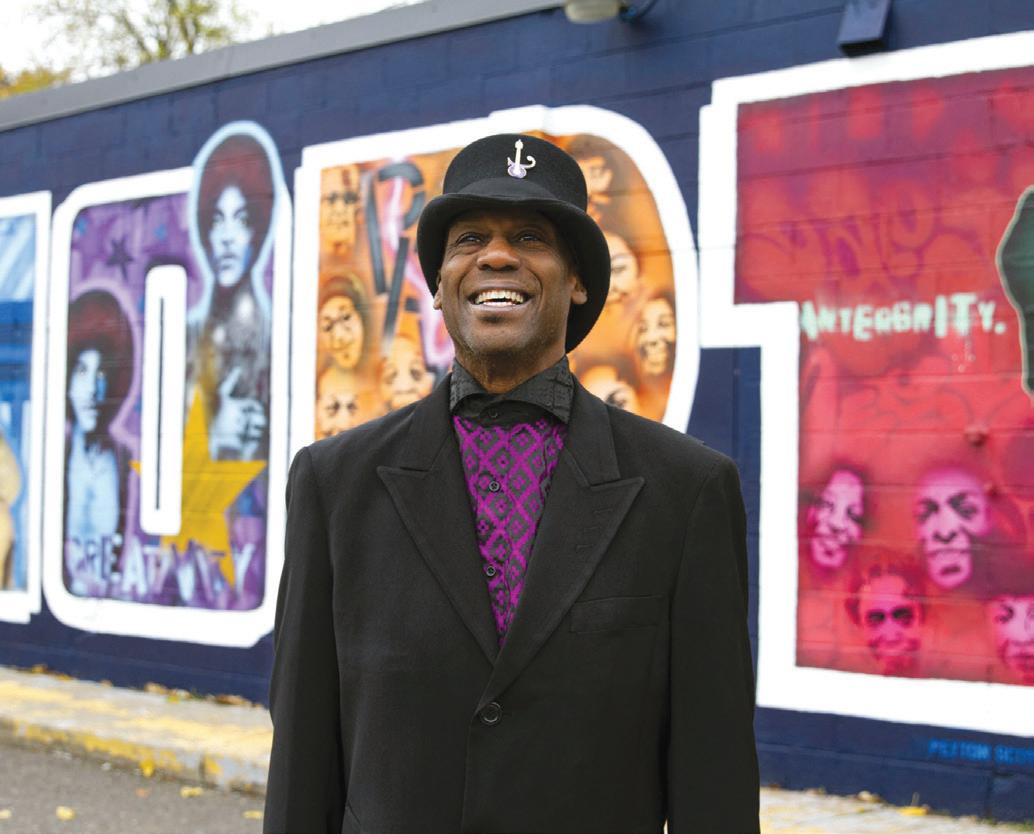
Black city council member alleges discrimination from colleagues
By H. Jiahong Pan Contributing Writereing one of the few people of color who live in Kettle River, 42 miles southwest of Duluth, Councilmember Monique Doward wants to improve her hometown. For example, she tried to apply for a grant to fix the city playground.
“The kids deserve it,” Doward said, showing off the sinking play structure during a recent MSR visit.
Though she submitted the application, Mayor David Lucas had it withdrawn because their colleagues hadn’t approved it and they didn’t have the matching funds. “We have a very small budget and we have a very tight budget,” said Lucas.
“We’ve been spending on city attorneys that we could probably use somewhere else,”
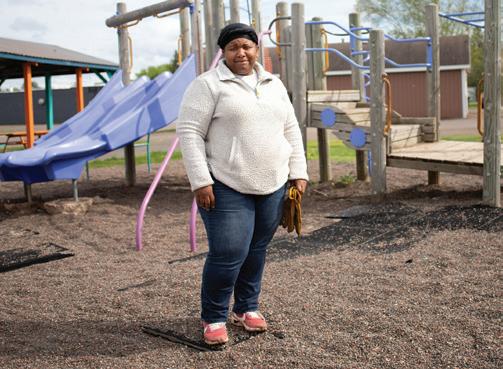
improve.
By Al Brown Assignment EditorAs the vibrant rhythms and soulful melodies of Black Music Month sweep across June, the MSR is proud to spotlight the iconic figures of the Minneapolis Sound. This legendary music phenomenon, globally recognized for its fusion of funk, rock, pop, and new wave, has its roots deeply planted in the Twin Cities.
Featuring groundbreaking artists such as Prince, whose genius first came to global prominence, to the innovative sounds of Jimmy Jam and Terry Lewis, Jellybean Johnson, Andre’ Cymone, Cynthia Johnson, Morris Day, The Sounds of Blackness, Alex-
ander O’Neal and Mint Condition, we celebrate the pioneering spirits who crafted a timeless legacy and transformed the musical landscape.
We kick off with an exciting history lesson about the original members of the band Flyt Tyme.
- Editor By Tony Kiene Staff Writere want our spot over here,” Jellybean Johnson said to Fox 9 News last June, explaining his vision for the
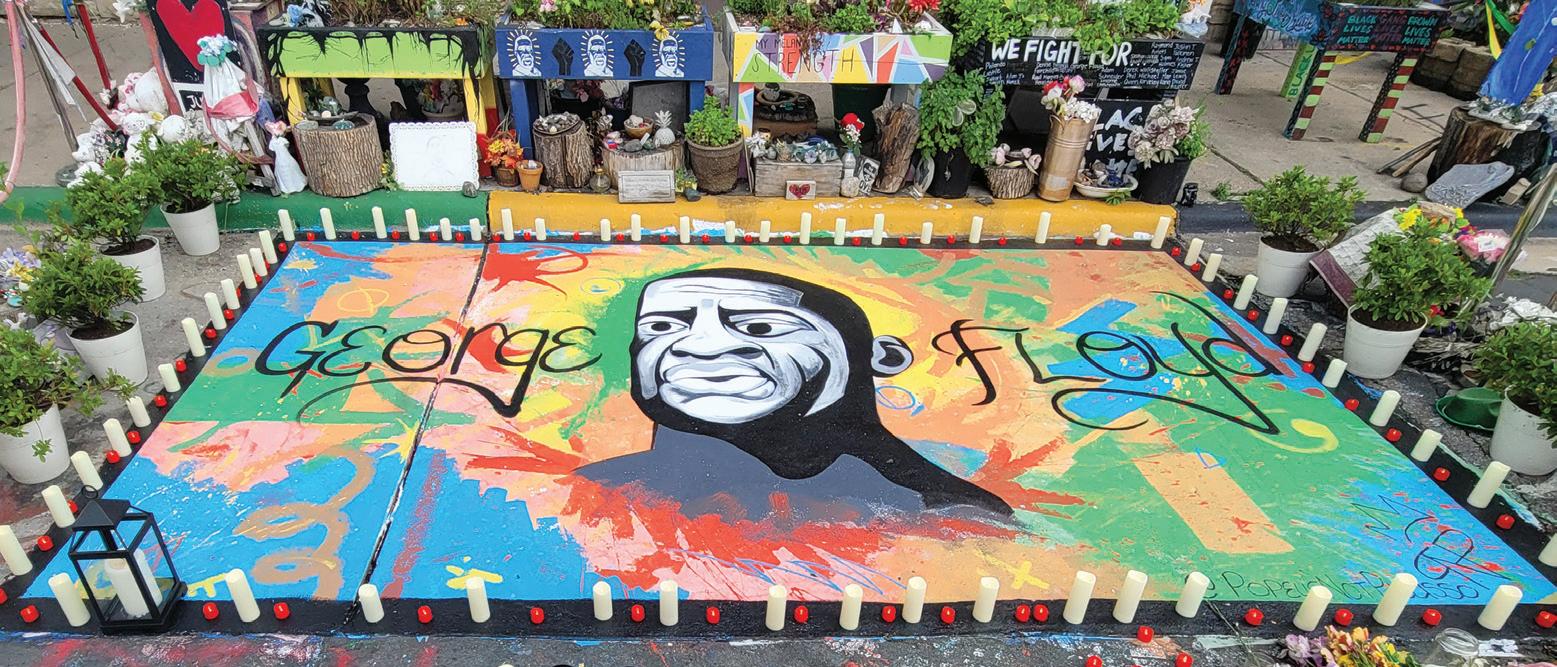 By Al Brown Assignment Editor
By Al Brown Assignment Editor
n Minneapolis’ George Floyd Square, the 4th anniversary of George Floyd’s death was marked with a profound blend of solidarity and reflection. On Saturday, a large crowd gathered for a candlelight vigil, illuminating the night with a sea of flickering lights. Floyd’s family members spoke, sharing heartfelt reflections and calls for justice, their words resonating deeply with those in attendance.
Community voices, including Jennie Leenay of The People’s Closet, added their perspectives. Leenay, who provides free clothing from a bus stop in the Square, passionately declared, “We ain’t playing. No justice, No peace!” This rallying cry has underscored the ongoing fight for social justice for years, echoing through the crowd.
On Sunday, the Square remained a focal point, drawing media attention from as far as London, with Doc Hearts, a documentary film company, capturing the essence of the community’s commemoration. These days of remembrance harmonized the spirit of resistance, hope and unity in the pursuit of lasting change.
As the city of Minneapolis prepares for its year-end report of what needs to be done to revitalize the block-long area beginning at the intersection
of 38th Street and Chicago Avenue, aka George Floyd Square, anticipation from some and doubts from others in the community swirl about. However, if this year is any indication to onlookers, the community is invested in keeping George Floyd’s death at the forefront of the fight for social justice.
The words “We ain’t playing” came through loud and clear.
Al Brown welcomes reader comments at abrown@spokesman-recorder.com.
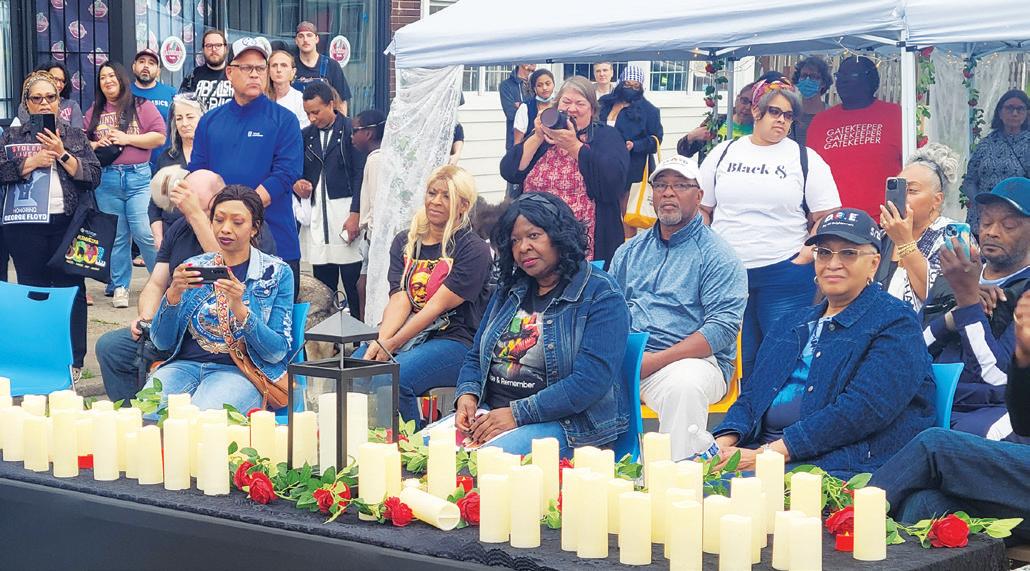
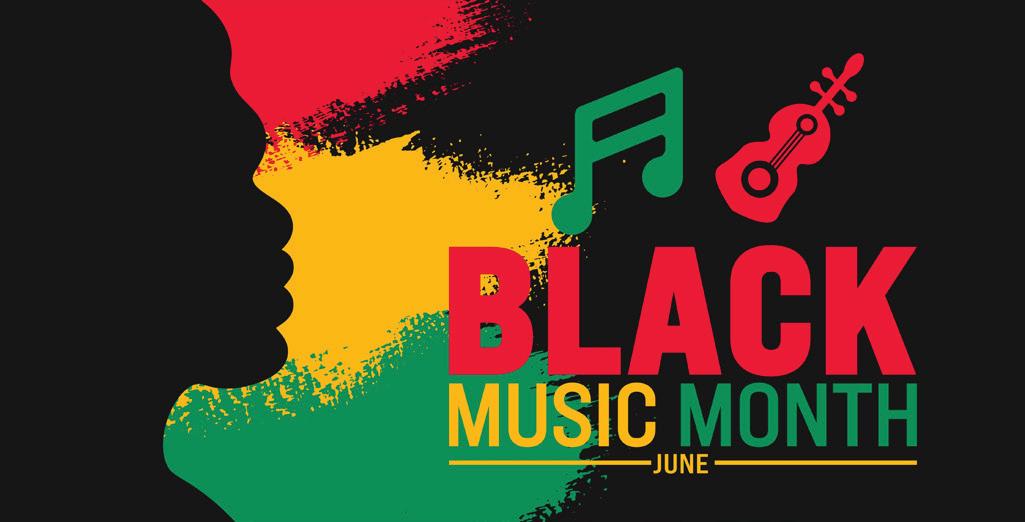
Minneapolis Sound Museum on the eve of the inaugural “Tales from the Northside” event, a sold-out fundraiser in support of said museum.
A 501(c)3 nonprofit organization, the Minneapolis Sound Museum is working to establish a permanent location in the city that will also feature a professional recording studio, event space, a retail shop, and other offerings.
“So, when you come to town, you can still go out to
Paisley,” noted Johnson. “But you can also come to our spot and see all the history with Prince, as well as the rest of us, all those that helped him to become the force that he was.” On Wednesday, June 5, 2024, from 7 p.m. to
Editor’s Note: Published on Feb. 5, 1981, this historical capsule represents a key point in Prince’s career. He was celebrated for selling three million records before the age of 20. At this stage in what would become a legendary career, Prince had recorded three albums, playing all the instruments and writing and singing all the songs himself.
To read this and more historical articles, please visit www. spokesman-recorder.com.
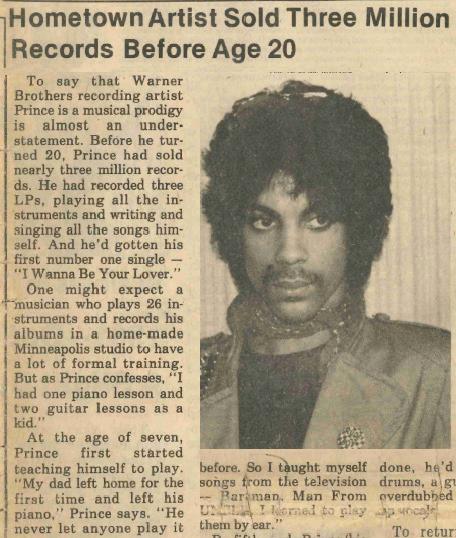
Ms. Juneteenth contestant finds her niche as mental health advocate Social worker is on mission to create more access for community
n the heart of our bustling community, where the diverse tapestry of humanity thrives, Ms. Aihomon Ebojie stands as a beacon of hope and transformation. With over eight years of dedicated service in the mental health field, she has carved a niche for herself as an advocate for marginalized populations.
Her journey from an aspiring student to an influential social worker, coupled with her recent nomination as a candidate in the Ms. Juneteenth Pageant
this summer, is a testament to her commitment and resilience.
Ebojie’s profound impact is deeply rooted in her academic foundation. Armed with a bachelor’s degree in psychology and a master’s degree in social work, she has utilized her knowledge to address the multi-faceted challenges faced by underrepresented communities. Her passion for mental health advocacy is palpable, especially in her efforts to implement policy changes aimed at inclusivity and equitable access to mental health services.
Focus on youth and holistic care
Throughout her career, Ebojie has observed a concerning trend: a significant rise in mental health issues among African Americans, particularly young adults between the ages of 19 and 24. This age range, often marked by the onset of severe mental health conditions such as depression, anxiety, and bipolar disorder, has become a focal point for her advocacy. Ebojie emphasizes that early identification and intervention are crucial in mitigating longterm mental health challenges. One of the most compelling
aspects of Ebojie’s work is her focus on holistic care. She has extensively worked with individuals experiencing physical disabilities, including those with cerebral palsy and paraplegia. Her approach transcends traditional therapy, integrating physical care with mental health support to address the overall well-being of her clients.
Ebojie’s empathetic and inclusive perspective ensures that her clients receive comprehensive care tailored to their unique needs. “The data shows that between ages
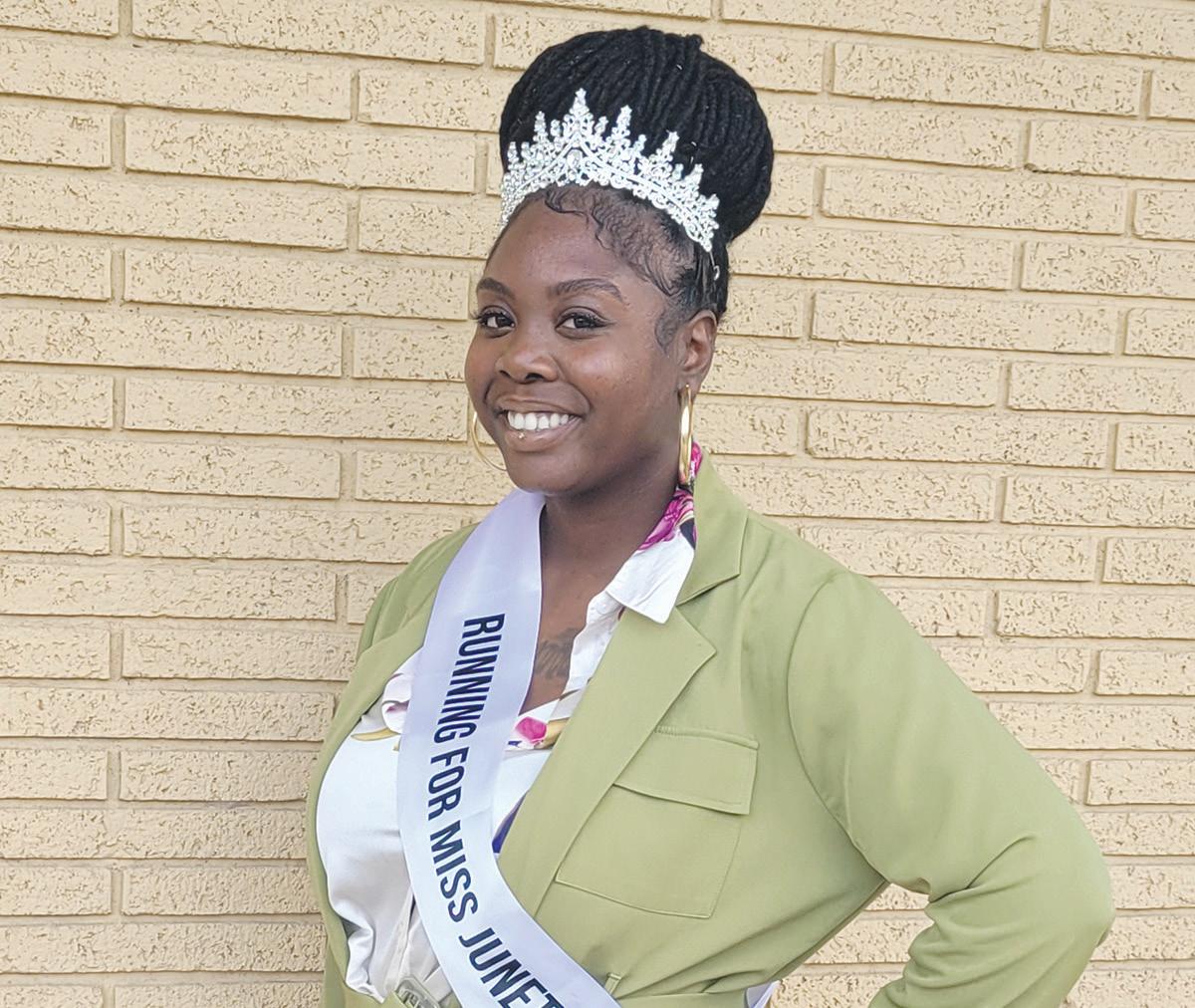
The court-ordered dissolutions will protect the public from further fraudulent use of the 17 nonprofits, which were used to steal funds intended to feed children during the COVID-19 pandemic.
Minnesota Attorney General Ellison today announced judgments dissolving 17 Minnesota nonprofit corporations that were created or revived to defraud the Federal Child Nutrition Program.
At the request of the Attorney General’s Office, Hennepin County Judge Karen A. Janisch issued orders shutting down the nonprofits after the attorney general established that officers and directors of the nonprofits misused nonprofit assets, had no legitimate nonprofit activities, and failed to cooperate with the attorney general’s investigation or to respond to the lawsuit.
The dissolution of these
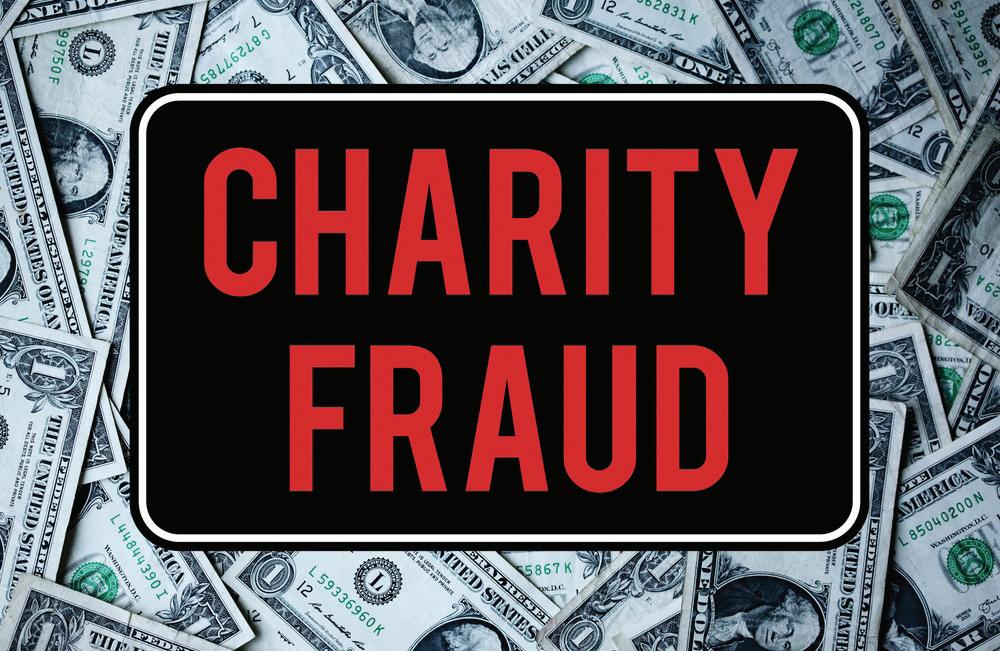
charities does not preclude future civil actions against other defendants, including any individuals involved in misappropriating charitable assets.
“The leaders of these 17 nonprofits harmed public trust in charities by pocketing funds intended to feed children,” Attorney General Ellison said.
“After thorough investigations, we successfully shut down these sham nonprofits to ensure they can never again be
used for fraudulent purposes.”
In October 2023, the Minnesota Attorney General filed 23 complaints against charities in Hennepin, Ramsey, Dakota, Stearns and Rice counties. The complaints against six entities— Advanced Youth Athletic Development, Bet On Better Future, Community Enhancement Services Inc., Serving Younger Generation, Urban Advantage Services, and Xogmaal Media Group and
Minnesota’s legislative session wrapped up over the weekend with lawmakers banning so-called prison gerrymandering. The provision was part of an elections policy bill quickly signed by Gov. Tim Walz.
Under such laws, state and local governments are required to count incarcerated people at their last home addresses when drawing new
political boundaries after each census. Supporters say that prevents a community hosting a prison from gaining greater representation by including these individuals in their population totals.
During an earlier debate, Esther Agbaje (DFL-Minneapolis) said when these protections aren’t in place, there’s a negative ripple effect. “What it also means is that the home communities where prison-
ers had come from have lost a portion of their political power in the state because of that population miscount,” she said. Some Republican opponents argued that communities with prisons have to stretch their resources, and local governments shouldn’t lose out on funding if those held inside are counted as living elsewhere. But supporters of these law changes say this is increasingly becoming a
Xogmaal Services—were resolved voluntarily.
As Attorney General Ellison alleged in the lawsuits, a majority of the entities were created or revived by individuals indicted under federal criminal laws for their roles in perpetrating fraud. An independent civil investigation that the Charities Division of the Attorney General’s Office conducted revealed that the nonprofits:
• were all created or revived around the start of the pandemic to capitalize on the Federal Child Nutrition Program,
• did not appear to have legitimate nonprofit activities on site,
• showed evidence of misuse in bank records when located,
• were abandoned or gave false addresses,
• failed to comply with state and federal reporting requirements that would have allowed regulators to detect the fraud,
• and failed to comply with the
attorney general’s investigation.
All of these findings provided grounds to shut the organizations down under Minnesota’s civil nonprofit corporation laws.
The 17 nonprofit defendants that were dissolved by court order include: Academy for Youth Excellence, African Chamber of Commerce Education; Gedo Community Services; Hobyo Health Care Foundation; Hope Academy for Youth & Women Empowerment; Minnesota African Chamber of Commerce; Minnesota’s Somali Community; Multiple Community Services, MCS; Optimum Community Services; Somali American Faribault Education; South West Metro Youth; StigmaFree International; The Free Minded Institute; United Enrichment with Heart; Unity Social Service; Youth Higher Educational Achievement; and Youth Inventor’s Lab.

bipartisan issue, with conservative states such as Montana implementing similar bans. Organizations such as the Prison Policy Initiative say the movement reflects the need to fix a longstanding flaw within the U.S. Census Bureau.
In Minnesota, the attorney general, through the Charities Division, has civil enforcement authority over the state’s nonprofit corporation, charitable solicitation, and charitabletrust laws.
The Charities Division does not enforce criminal laws. The Attorney General’s Office provides many resources and information about laws governing nonprofits and nonprofit governance on its website.
The public may submit complaints to the attorney general about the misuse of nonprofit resources online. The Attorney General’s Office can also be contacted on the phone at 651296-3353 (Metro area), 800657-3787 (Greater Minnesota), or 800-627-3529 (Minnesota Relay).
Information provided by the Office of Attorney General Ellison.

Nearly 20 states have either banned or restricted prison gerrymandering. Many local governments across the country have adopted bans as part of their redistricting.
Mike Moen writes for the Minnesota News Connection.
“While the Census Bureau has not yet decided to act, Minnesota can use its power to reallocate the data that comes from the Census every 10 years to ensure a more accurate count, “ Agbaje explained. In situations where an incarcerated person has a last home address outside of Minnesota, or no home address at all, they’re excluded from redistricting counting but are still added to the statewide population total.


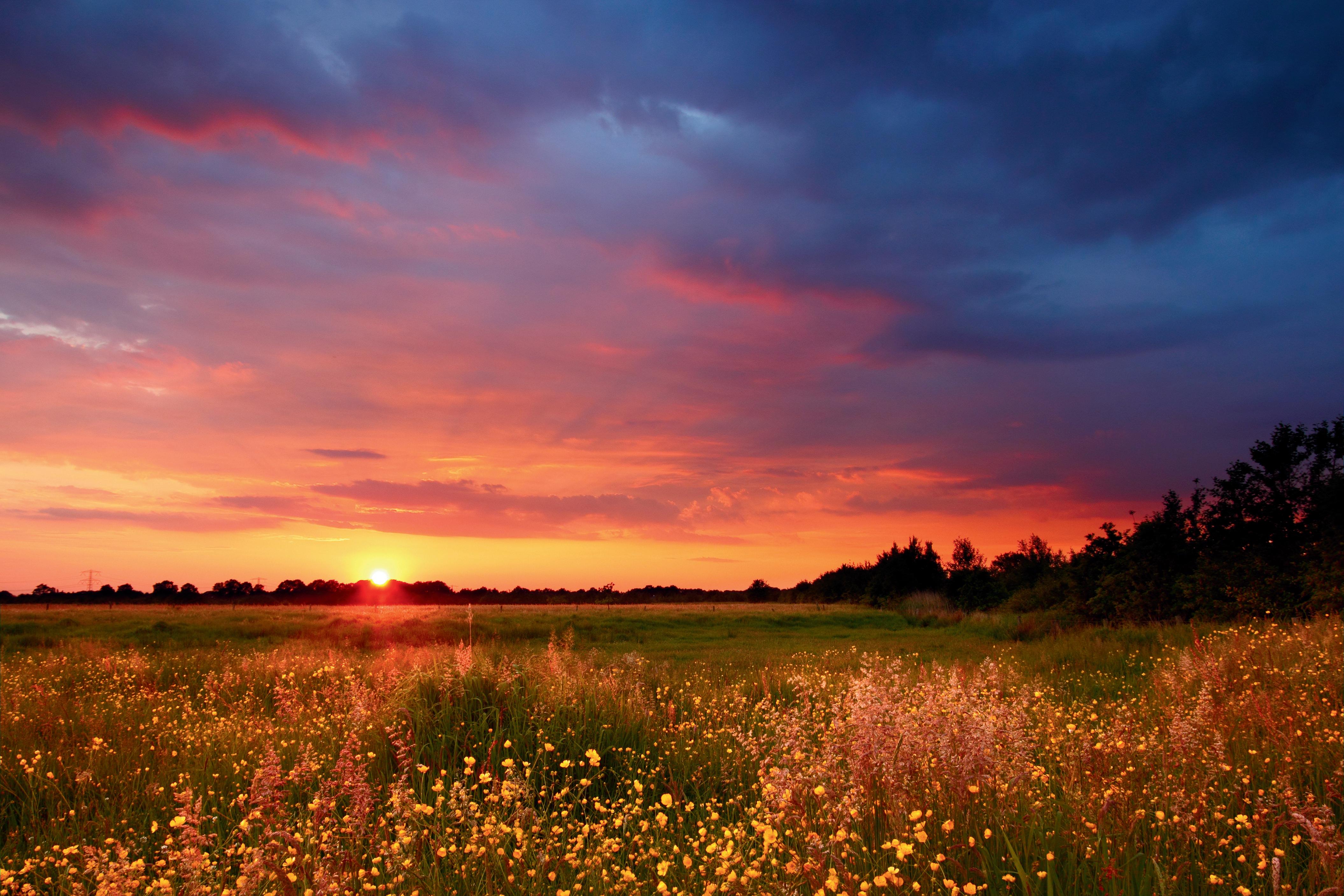

Continued from page 1
formidable musical forces ever to emerge from North Minneapolis.
Initially billed as the Wars of Armageddon, a nod to Funkadelic’s classic song of the same name, Flyt Tyme was the chief rival to the Princefronted Grand Central. The two neighborhood bands battled for musical supremacy “over North’’ and across the Twin Cities in the 1970s.
The awe-inspiring list of Flyt Tyme alumni includes, among others, Cynthia Johnson, David “Batman” Eiland, Sue Ann Carwell, Jimmie “Chipmunk” Anderson, Monte Moir, and Alexander O’Neal, plus Rock and Roll Hall of Famers Jimmy Jam and Terry Lewis.
Then, of course, there’s the sole individual who’s been part of every iteration of this legendary outfit the past 50-plus years—from Wars of Armageddon to Flyt Tyme, and from The Time to the Original 7ven and to today’s lineup of Morris Day and The Time—Garry “Jellybean” Johnson, whose immense talent and loyalty, as anyone will tell you, is only surpassed by his humility.
Several former members of Flyt Tyme, including Johnson, will help to anchor “Tales from the Northside.” They will participate in a panel moderated by critically acclaimed author Andrea Swenson, where they will revisit the early days of the Minneapolis Sound.
“Oftentimes buildings are torn down, or places change hands, photos and videos become mis-
Continued from page 1
added Lucas, referencing the lawsuits and complaints filed by Doward that the city has needed to defend itself from.
Doward’s lawsuits, complaints, and attempt to fund a new playground are among the reasons her colleagues decided to censure her on May 21. She is the fourth known locally elected official in Minnesota to be censured this year. While she believes race played a factor, her colleagues say she simply isn’t following the rules.
The road to censure
Doward and her family moved to Minnesota after they were ravaged by Hurricane Michael in 2018. They found a house in Kettle River, not knowing much about the town.
“It was a real true house for 40 grand, and it was like, ‘Alright, I’m getting this sucker, we’re not gonna be homeless no more, children,’” said Doward.
Doward’s troubles started relatively soon after she was elected to the city council. In one incident, she voted to appoint a colleague to serve on the planning commission.
“She calls screaming and yelling because she didn’t get a packet, so we explained to her
Continued from page 1
19-24 African Americans have higher rates of mental illnesses but seek help at a much lower rate than whites,” she explained. “This is in part due to the stigma among our communities—we don’t want to appear crazy, or simply ‘don’t want folk in our business.’”
Central to Ebojie’s advocacy is the belief in proactive mental health management. She underscores the importance of recognizing early warning signs of mental illness, which often go unnoticed, especially in underrepresented communities. Ebojie advocates for better training for healthcare professionals to detect these signs early and stresses the need for public awareness campaigns to educate communities about
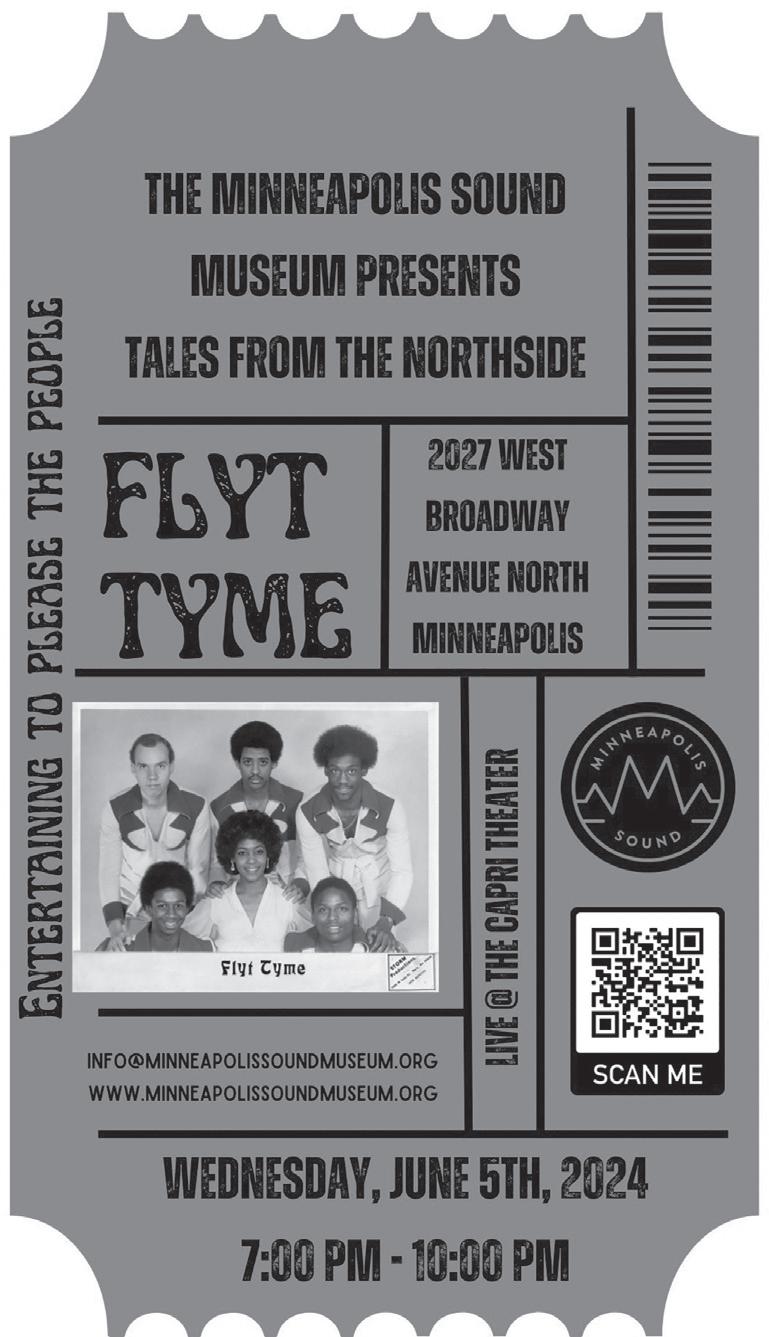
placed or lost. But people and their narratives live on,” says Marty Bragg, co-founder of the Minneapolis Sound Museum, “Hearing these oral histories helps to ensure that these amazing stories are told for generations to come.”
In addition to the Flyt Tyme conversation, a
that she was no longer on there because there can only be one councilor and the mayor,” City Clerk Kathy Lake said in a phone interview. “It has escalated ever since.”
In June of 2022, the city council passed a resolution permitting Doward to access city hall only when Lake is not alone, as they each sought legal action against one another.
In February 2023, Doward countersued Lake, alleging she threatened to “pop” her.
“I was talking to another resident, and I told [the resident], ‘I’m gonna pop you one of these days,” said Lake. The case is pending.
the city and her colleagues in state and federal court, claiming employment and civil rights discrimination. Those lawsuits were dismissed because she failed to cite specific law violations. Judge Eric C. Tostrud warned Doward she could be sanctioned for harassment.
Meanwhile, Doward was censured again on May 21. The censure resolution said she unilaterally changed the hours of operation and locks at city hall, insisted that she review documents she already has access to, brought frivolous lawsuits and complaints against the city and her colleagues, and solicited money for the city and worked on an emergency preparedness plan without her colleagues’ approval.
Claims of discrimination
Doward wasn’t at the meeting because she said she was at a first responder’s training in Duluth, and her ride could not return to town in time. The city has previously accommodated Doward’s requests to participate remotely.
second discussion, led by Emmy Award-winning media professional Bianca A. Rhodes, is designed to lift the work of those who continue to actively pass the gift of music and the history of the Minneapolis Sound on to the younger generations.
Currently slated for this panel are Spike Moss, former director of The Way; David “T.C.” Ellis, founder of the High School for the Recording Arts in St. Paul; Purple Playground’s Heidi Vader and Willie Adams; Emmanuel Duncan and Sarah Lanier-Duncan of the hip hop duo iLLism; the Paisley 5 & Dime’s Eric Rogers; and Terry Esau of the nonprofit Free Guitars 4 Kids.
Patrick Adams, from Paisley Park and Patrick Adams Muzic, will also be on hand to discuss the work Paisley Park is doing for kids in the community.
Doors to the Capri open at 6 p.m., and a meet-and-greet will take place in the foyer before the main event. The evening will include light hors d’oeuvres, a cash bar, exhibits, games, prizes, and music from DJ Nevermind.
Likewise, Swenson will be signing copies of her brand-new book, “Prince and Purple Rain: 40 Years,” while other vendors will include the celebrated music photographer Tommy Smith, III, aka “Rock N Roll Tommy.”
Live music from the kids at Purple Playground will also be performed. The evening will be capped by the Jellybean Johnson Experience, featuring vocalist Monique Blakey, along with Art Haynes (bass), Christopher Troy (keyboards), and Ke’Andre Mack (drums).
A limited number of tickets are available, and the proceeds from all ticket sales qualify as a charitable donation that directly supports the
Minneapolis Sound Museum. To purchase tickets, visit https://bit.ly/TalesFlytTyme.
“Tales from the Northside: Stories of Flyt Tyme” is sponsored by Diverse Emerging Music Organization (DEMO), Electric Fetus, Sound Around Tours, Purple Playground, and the Paisley 5 & Dime.
“Oftentimes
buildings are torn down, or places change hands, photos and videos become misplaced or lost. But people and their narratives live on.”
“This is such an important event. And the community’s support is critical to helping us secure a future for the Minneapolis Sound Museum,” says Bragg, “an organization that is dedicated to making sure that all the voices that created this music, music that changed the world, are heard and honored.”
Go to minneapolissoundmuseum.org for details and to learn more about how you can support the Minneapolis Sound Museum.
Tony Kiene welcomes reader comments at tkiene@spokesman-recorder.com.
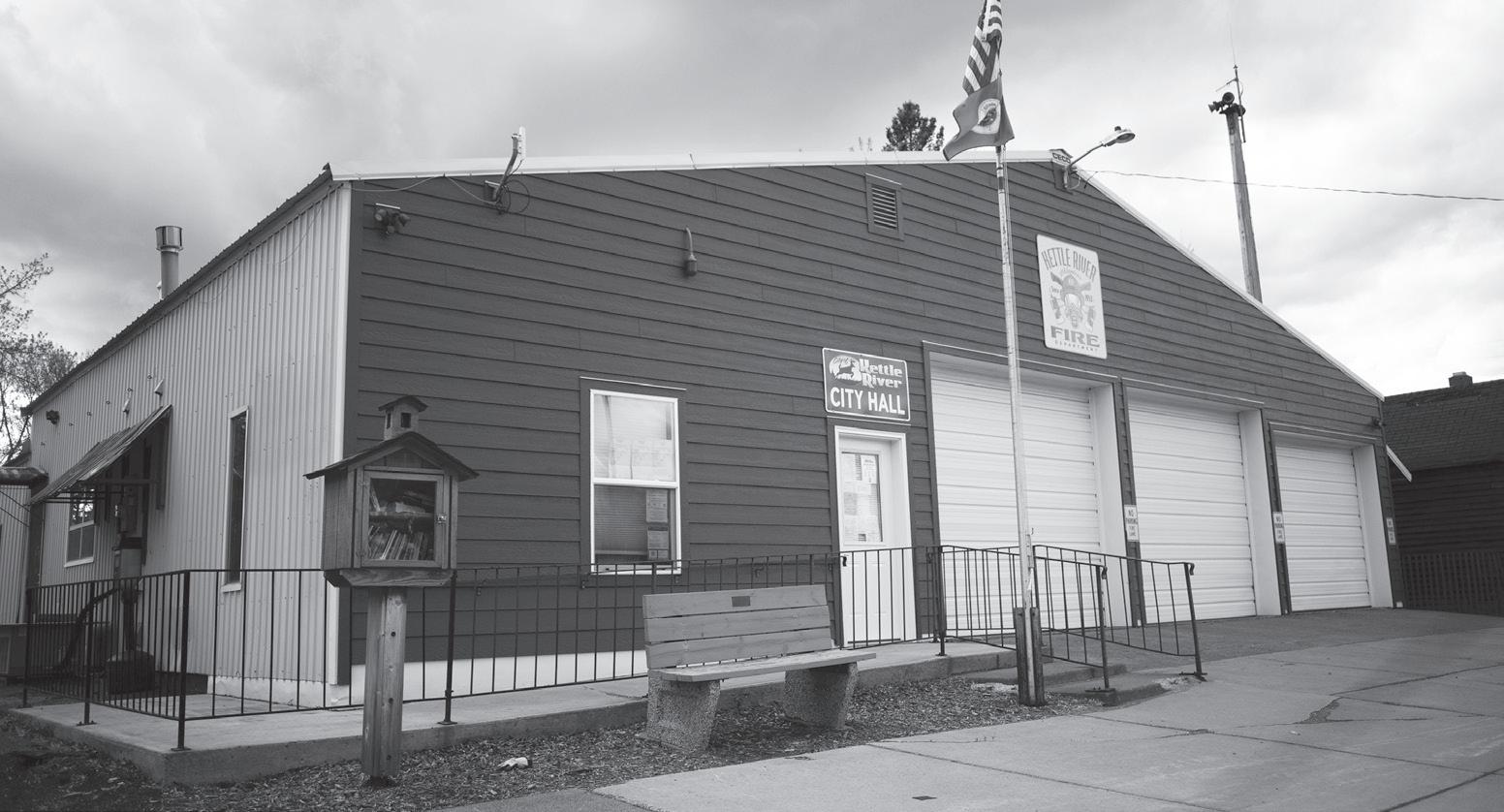
state law of where the meeting would take place.
Doward was advised she could join the meeting from the Moose Lake McDonald’s, but she couldn’t participate. She believed her powers had been stripped.
tow her van because it blocked a water shutoff line.
Officials also accuse her of making false accusations, including that council members were racist, for which Doward was censured in July 2022. Doward believed she was censured because she contacted the State Auditor about the city’s credit card use.
In addition to Doward’s lawsuit with Lake, she also sued
mental health.
“Education is the cornerstone of mental health advocacy,” Ebojie remarks. “By empowering individuals with knowledge, we can break the stigma surrounding mental health and encourage people to seek help without fear of judgment.”
Vision for the future
Ebojie’s dedication extends beyond her professional endeavors. Her involvement in the community is equally impressive. As a candidate for the state’s first Ms. Juneteenth Pageant, Ebojie is poised to use her platform to highlight the significance of mental health, particularly within the Black community. The pageant, a celebration of Black culture and heritage, provides a vital stage for Ebojie to amplify her message and inspire others to join the fight for mental health equity.
Doward once tried to participate remotely from home but balked because state law requires the address of her home be advertised to the public. She tried to have the location changed to a McDonald’s in nearby Moose Lake, but the city couldn’t because they had already provided an advanced notice required by
Her vision for the future is both ambitious and inspiring. She aims to spearhead policy changes that will facilitate better mental health support for diverse and underrepresented communities. By collaborating with policymakers, healthcare providers, and community lead-
The city council subsequently stopped allowing Doward to participate remotely. “She actually showed up to a meeting without telling us that she wasn’t gonna do remote,” said Lucas, adding the city has to pay out of their limited budget to set up a Zoom meeting.
Meanwhile, Doward says she was getting rides because her SUV is unreliable. On May 10, the city towed her van, which she uses for gardening, hauling, and loan signing. Mayor Lucas said the city needed to
marginalized populations from accessing quality mental health care. This includes increasing funding for mental health services, improving cultural competency training for healthcare providers, and implementing community-based support programs.”
“We need to address systemic barriers that prevent marginalized populations from accessing quality mental health care.”
ers, Ebojie hopes to create a more inclusive mental health care system that caters to the unique needs of every individual.
“Policy change is essential for sustainable impact,” Ebojie asserts. “We need to address systemic barriers that prevent
Ebojie’s story is a powerful reminder of the impact one individual can have on a community. Her unwavering commitment to mental health advocacy and her relentless pursuit of equity and inclusion serve as an inspiration to many.
Mayor Lucas says Doward hadn’t been paying her water bill so the city needed to shut her water off. The city also said in 2021 that her water meter was malfunctioning, and because they weren’t able to replace the meter, they were charging her the minimum allowed under state law.
However, she verified with city workers that the meter worked properly and allowed them to read it. Doward also contended her colleagues illegally raised the water rates by a resolution and not an ordinance.
The city also said the van was parked improperly, even though Doward says it was parked on her property. Doward filed complaints with the state At-
As she continues her journey, both as a social worker and a community leader, Ebojie remains focused on her mission to better the lives of those who have been overlooked and underserved.
Mental health care for all
In a world where mental health challenges are becoming increasingly prevalent, especially among young adults, Aihomon Ebojie’s work is not just important—it is vital. Her efforts to break down barriers and create a more inclusive society are paving the way for a future where mental health care is accessible to all, regardless of race, ethnicity, or socioeconomic status. Whether she’s serving healthcare clients, being the secretary of the Minneapolis NAACP, or stepping into the spotlight at the Ms. Juneteenth Pageant, Ebojie
torney General’s office and the state Bureau of Criminal Apprehension, alleging the towing was unlawful. The city says they acted lawfully. She did prevail once when she found Lake unilaterally changed an ordinance to prohibit free-range chickens. Lake was suspended for five days and put on one-year probation, and the city council canceled a pay increase.
Despite the animosity, Doward says she likes her adopted hometown and wants to recruit residents to take over the city council later this year. “So we can actually get positive things going on in the city.”
H. Jiahong Pan welcomes reader comments at hpan0003@ gmail.com.
carries with her the hopes and dreams of countless individuals whose lives she has touched, embodying the true spirit of a compassionate and transformative advocate. But throughout her many endeavors, mental health remains her focus. “Almost everyone is dealing with some form of mental illness—whether stress, depression, anxiety… But if we get the help we need, we are able to heal ourselves.”
If you have mental health questions pertaining to the African American community or other matters for the NAACP, please call 612-806-7801. The Miss Juneteenth State Pageant takes place June 8, 2024, at Sundin Music Hall on the campus of Hamline University in St. Paul.
Al Brown welcomes reader comments at abrown@spokesman-recorder.com.
“Back in 1949, the thought was that in a land of 10,000 lakes,” says Aaron Raivo-Lynch, senior director of camp operations at Phyllis Wheatley Community Center (PWCC), “it only seems right that this community has a space of its own.”
And it was on the strength of that sentiment that the vision for the first Black-owned summer campsite in the history of the North Star State was born.
Established in 1956, the camp was named in honor of longtime PWCC board member and supporter Katherine Parsons, who facilitated the purchase of 100 acres of land along the shores of Oak Lake in northern Carver County, just outside the small city of Watertown.
Under the dedicated leadership of Carrie Hoffman Wallace and Cozelle Breedlove, Camp Katherine Parsons helped expose North Minneapolis youth to the wonders of the natural world for nearly half a century to build generations of “healthy, productive, and happy future leaders.”
Unfortunately, funding for the camp faded, and the property fell into disrepair. Multiple attempts at revival have been made since the camp closed in the early 2000s. In 2023, a new funding bill sponsored by Senator Bobby Joe Champion and Representative Esther Agbaje brought the dreams to restore Camp Katherine Parsons back to life.
The restorative value of the natural world
Raivo-Lynch, who came of age on the North Side in the 1990s, understands the importance of camp and outdoor activities, especially regarding the mental, emotional and physical health of young peo-
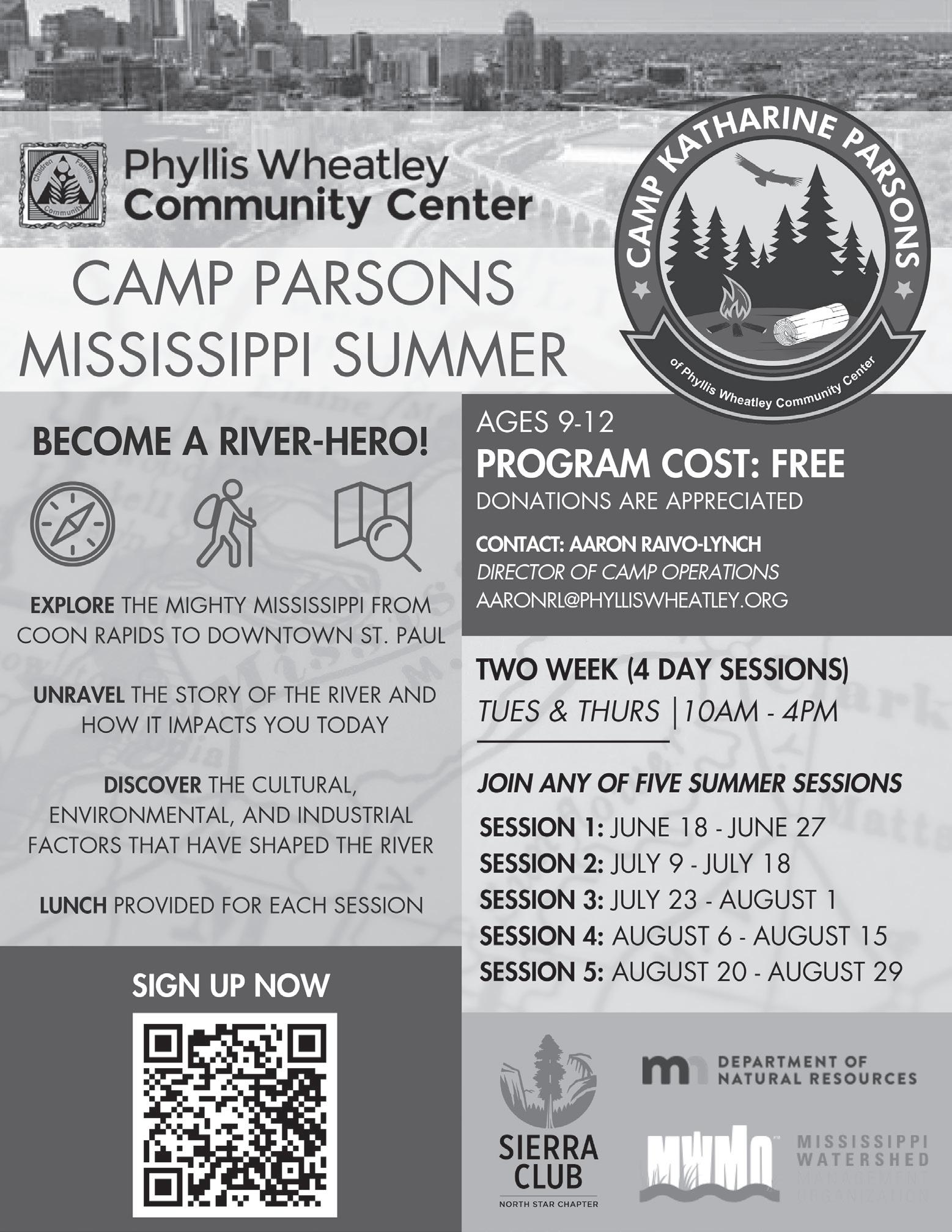
ple in our communities. “I grew up during the days of ‘Murderapolis,’” he explains, “when hearing sirens and gunshots around my neighborhood was normal, whereas the sounds of nature were not.”
Raivo-Lynch, who at age five lost his grandfather to murder, credits his mother with introducing him and his two older sisters to the outdoors, making sure they experienced the natural environment around them as well as the benefits that summer camp and similar activities had to offer.
Those experiences shaped his childhood and many of his career choices. He learned both the program and facility side of parks and recreation. RaivoLynch joined PWCC in 2022 and was inspired by the organization’s quest to reestablish Camp Katherine Parsons.
“I see a lot of similarities to my childhood and what kids on the North Side face today,” he reflects, “a lot of parallels to the violence from when I was growing up.”
That’s why, after the pandemic Ravio-Lynch emphasizes
the restorative value of summer camp and connecting young people to nature. “This is vital to the health of children,” he continues.
“For a lot of kids that will attend camp, this might be the first time they’ll ever remember being without a cellphone or access to another screen of some kind. Engaging them in outdoor activities, creative play, and other new experiences can build self-esteem, promote leadership skills, and open their eyes to opportunities they never knew existed.”
The future of Camp Katherine Parsons
Additional fundraising efforts are underway. The new designs for Camp Katherine Parsons are planned to be completed by November of this year, with a goal to reopen in the spring of 2025. In the meantime, PWCC will hold programming this summer under the banner of Camp Katherine Parsons for the first time in more than 20 years.
Sponsored by the North Star Chapter of the Sierra Club, the Mississippi Watershed Management Organization (MWMO), and the Minnesota Department of Natural Resources, “Camp Parsons Mississippi Summer” will consist of five two-week sessions, beginning on June 18 and continuing through August 29. Each session is open to children between nine and 12 and will meet four times (Tuesdays and Thursdays).
This is a chance to communicate to youth that African Americans and other people of color have been in Minnesota for centuries.
The program encourages a healthy, active lifestyle and emphasizes the importance of walking, biking, water safety, and simply being outside. Moreover, it seeks to see the river and the natural world around it as recreational space that belongs to all of us. With the many health-related benefits Camp Parsons Mississippi Summer will promote, there is also an important educational aspect to the campers’ activities.
“Of course, Minneapolis is known as the City of Lakes,”
observes Raivo-Lynch. “But the Twin Cities exist because of the Mississippi River, and more specifically because of St. Anthony Falls.”
On the Minneapolis side of the river and in addition to St. Anthony Falls, campers will visit important sites such as the Sumner Field/Bassett Creek area, Coon Rapids Dam, MWMO headquarters, and North Mississippi Regional Park. St. Paul locations will include Mounds Regional Park, Harriet Island, and Dayton’s Bluff, highlighted by a boat ride from downtown St. Paul to Ft. Snelling State Park.
And as Raivo-Lynch notes, Ft. Snelling is significant for many reasons. It was, for example, the site where Dred and Harriett Scott were enslaved during the 1830s, where more than 1,600 Dakota people were kept in an internment camp beginning in 1862; and it’s where a group of escaped slaves that later founded Zion Baptist Church first came ashore in 1863.
“This is a chance to communicate to youth that African Americans and other people of color have been in Minnesota for centuries. That they were part of the outdoors, part of the river. And have contributed to life here for a long time.”
To register a child for Camp Parsons Mississippi Summer, scan the QR Code below for more information. To support the restoration plans for Phyllis Wheatley Community Center’s Camp Katherine Parsons, please scan the corresponding QR code.
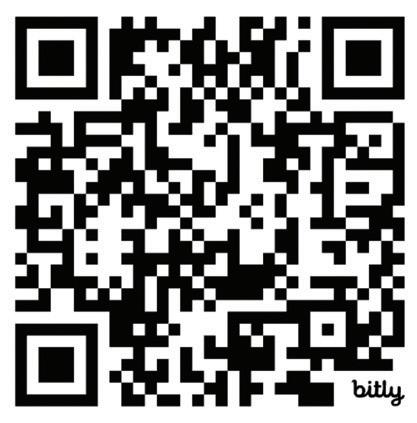
Children spend most of their time learning and growing, and the right mindset is crucial for their development. You can help your kids adopt a growth mindset that will help them develop the skills for embracing all of life’s opportunities. It all starts with a love of learning and a bit of resilience.
What is a growth mindset?
You probably have a fixed mindset if you see attributes like intelligence and patience as set quantities. In contrast, those with a growth mindset see traits as skills that can improve and develop with continuous learning, hard work and resilience. A growth mindset is associated with improved outcomes in all areas of life since these individuals embrace new opportunities, even the hard ones.
The importance to childhood development
Some homes and schools reward success and punish failure in everything from social skills to academic knowledge.
Kids may also adopt labels like the smart one, fast one, or funny one. The fixed mindset that comes with these environments makes it hard for children to try new things or stick with a challenging task; failure is a foregone conclusion, so they don’t attempt to succeed. In contrast, homes and schools that value the process of learning and the importance of resilience foster a growth mindset. Children in these environments are better prepared to handle complicated situations, confront unexpected challenges, and be innovative leaders as adults.
Encouraging a love for learning
A growth mindset requires a love for learning; you can’t grow and improve alone. Encouraging our kids to love learning from an early age will make it easier for them to be lifelong learners as they develop.
Think beyond the classroom
Kids know they’re meant to learn at school, but make sure they see how learning happens at home, too. Change their definition of learning from “lessons” to

“experiences” as you complete household projects or investigate something on a nature walk. Let them share ownership in your finished product so they’ll take pride in the learning it took to get there.
Let kids genuinely take the lead
Kids spend their days naturally learning, so let them take the lead when you have free time. Encourage their curiosity around a topic of interest
and show that you’re investing time and energy alongside them. Rather than sticking to a schedule, allow for detours and meandering discussions on a weekend afternoon so your kids feel empowered to explore their ideas.
Instilling resilience If there’s always pressure to get things “right,” getting stuck in a fixed mindset is inevitable. Kids subconsciously learn to gravitate toward activities
where they’ll excel to avoid actual or perceived punishment for failing. Cultivating resilience requires opportunities to take risks, fail, and try again.
Offer opportunities to fail
As a family, encourage the process of learning and experimenting more than the outcome. Routinely choose activities that are challenging for everyone, like a long hike or complicated board game; when it’s over, comment on
the fun you had spending time together. Whenever your kids share homework, ask questions about their creative process rather than the final grade. Your kids will learn they can try new things without risking acceptance if they should fail.
Create family values, not rules
Many families have essential rules for their homes but consider rephrasing them as family values instead. Resilience requires an ability to adjust one’s thinking and adapt to new information, challenges and opportunities. Statements like “No yelling or hitting” are narrow and restrictive. In contrast, “Everyone’s mind and body deserve respect” allows your kids to practice implementing the concept in various situations.
Modeling the mindset
You can help guide your kids to love learning and be resilient, but modeling is one of the most essential parenting tools. Just as kids learn language skills from adults around them, feelings and attitudes are also
on page 5
Dozens of wildfires are burning across Canada in May 2024 and sending unhealthy smoke blowing into the northern U.S. again. At the same time, the southeastern U.S. is getting smoke from Mexico, where drought conditions have been fueling fires.
Last year, Canada’s record 2023 wildfire season introduced millions of Americans across the Midwest and northeastern states to the health hazards of wildfire smoke, with air quality alerts that reached levels never seen there before.
Professional baseball games were postponed and the skies
exposure is still likely to increase as temperatures rise and moisture levels change. In short, people will need to learn to live with wildfire smoke. It won’t be every year, but it will be more common.
Preparing for smoky days
Managing the risk of wildfire smoke starts with making smart personal choices.
Think of smoke waves like heat waves: They’re easier to face if you’re prepared and know they’re coming. That means paying attention to forecasts and having face masks, air monitors and cleanair shelters available.
Inhaling the particulate matter and the chemicals in wildfire smoke can exacer-
terns and activity schedules, and changing household ventilation choices.
What schools and communities can do
Living with smoke will also require changes to how schools, businesses, apartment buildings and government buildings operate.
Schools can start with setting a threshold for canceling outdoor activities and making sure staff are ready to meet the needs of kids with asthma.
Building managers may need to rethink air filtration and ventilation and deploy air quality sensors. Communities will also need contingency plans for festivals and recreation venues, as well as rules

in New York City turned orange with haze, at times exposing millions of people to the worst air quality in the world. In some regions, the smoke hung on for days.
The pressing question on many people’s minds: “Is this the new normal?” From our perspective as air quality scientists, we think the answer is likely “yes.”
States and the Forest Service can use prescribed fires and forest thinning to help reduce the number and intensity of fire outbreaks, but smoke
Continued from page 4
displayed for younger audiences to absorb.
Share your struggles and successes
Parents often try to shield their kids from the realities of adulthood. While some of this distance is important, it can keep your hard work to achieve success a mystery. Share your struggles and triumphs during a conversation around the dinner table or a drive across town.
Let kids watch you learn
Are you practicing a new skill
bate asthma, worsen existing respiratory and cardiac problems, and leave people more susceptible to respiratory infection. People caring for individuals sensitive to smoke, such as young children and older adults, will need to plan for their needs in particular.
To prepare, read up on the risks and warning signs from public health professionals. Living with wildfire smoke may mean using air filtration devices, wearing N95 or KN95 masks on bad air days, modifying outdoor commuting pat-
or taking up a new hobby? Let your kids tag along to a class or sit next to you in the garden so they see firsthand how you handle obstacles. Hearing your self-talk will give them a model to use on themselves.
Note a challenge and then research information later by calling a friend or heading to the library. Knowing how to solve a problem using a network of resources is one of the essential skills for resilience. Cultivating a growth mindset is a lifelong process, and you can help your kids start on the right foot at home.
The MSR + Minnesota Department of Health (MDH) share a mission of protecting, main-
for businesses to protect outdoor workers.
Decisions on how to deal with smoke can be complicated. For example, selecting an air purifier can be a daunting task, with over 900 products on the market. The effectiveness of different smoke management interventions is not well known and can vary depending on small implementation details.
Improving smoke monitoring and forecasting
The U.S. has an extensive air quality monitoring and
taining, and improving the health of ALL Minnesotans. Our shared vision for health equity in Minnesota, where ALL communities are thriving and ALL people have what they need to be healthy, is the foundation of our partnership to bring readers our feature, Parenting Today. Good health starts with family! To view our weekly collection of stories, go to our website or scan the code.


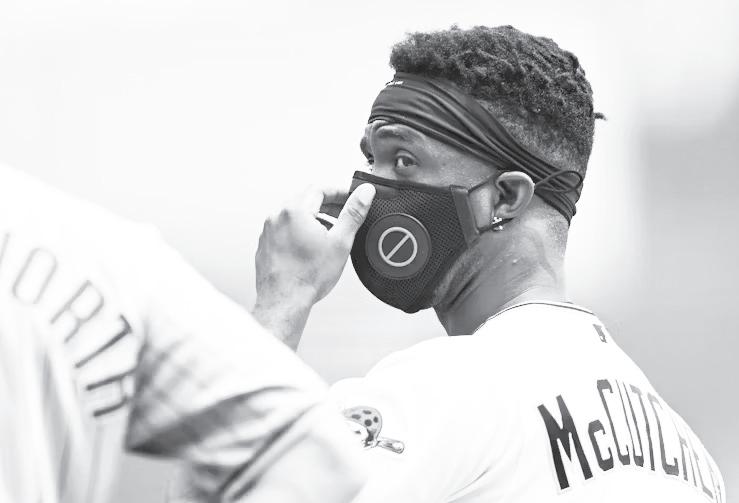
forecasting system to help provide some early warning. It uses ground-based air quality monitors, satellite remote sensing systems to detect smoke and fires, and computer systems that tie observations together with wind, chemistry and weather. These are supplemented by expert guidance from meteorologists.
However, for average people trying to make decisions about the safety of outdoor activities, the current forecasting system is wanting. This is especially true when smoke blows in from fires far away, or when rapidly changing smoke emission rates and complex wind patterns lead to conflicting forecasts and advisories. A few key improvements would go a long way for practical decision making around wildfire smoke. More accurate 10-day forecasts and neighborhood-level forecasts would help communities plan ahead. Merging seasonal weather forecasts of precipitation, humidity and winds with satellite assessments of wildfire fuel conditions could also enhance emergency planning.
Maintaining a strong air quality monitoring network is also important. However, state and local government agencies have reduced the number of ground monitors by about 10% from its peak in 2001.
Smoke estimates from satellites and low-cost portable sensors can help, but they work best when they can be cross-calibrated to a wellmaintained network of highaccuracy monitors.
For average people trying to make decisions about the safety of outdoor activities, the current forecasting system is wanting.
We still have a lot to learn More effective adaptations to smoke will require more research to better understand the effects of repeated exposures to wildfire smoke and
the compound hazards that develop when the smoke hits simultaneously with other challenges, such as extreme heat. Community responses, such as providing clean-air shelters—the equivalent to a cooling center during extreme heat—are gaining attention, but there is only limited guidance on what constitutes a clean-air shelter and where and when one would be used.
Living with smoke is emerging as a new reality that people across much of North America will have to contend with again this year and prepare for in the future.
Charles O. Stanier is a professor of chemical and biochemical engineering at the University of Iowa; Gregory Carmichael is a professor of chemical and biochemical engineering at the University of Iowa, and Peter S. Thorne is a University of Iowa distinguished chair and professor of environmental health at the University of Iowa.
This story was republished with permission from The Conversation.



Historically, non-competes have been used to restrict employees from working in the same industry after leaving their former employer. Though the intention is to protect the intellectual property of businesses, non-competes have often negatively affected competition in product and service markets, especially with Black workers.
In what has since created shockwaves across the nation, the Federal Trade Commission (FTC) voted 3-2 for banning non-compete agreements, which goes into effect 120 days after the rule is officially published in the “Federal Register.” This decision will undoubtedly have a significant impact on both employers and employees alike, but what about Black entrepreneurs?
The FTC defines a noncompete clause as “a term or condition of employment that prohibits a worker from, penalizes a worker for, or functions to prevent a worker from (1) seeking or accepting work in the United States with a different person where such work would begin after the conclusion of the employment that includes the term or condition; or (2) operating a business in the United States after the conclusion of the employment that includes the term or condition.” If written properly, most noncompetes have outlined specific restrictions of a current or
former worker, who can be their employer, where they can work for said employer, and for how long they aren’t allowed to work for an employer, which can be unduly burdensome. Imagine being told who to work for and who not to work for. That basically is a noncompete.
perpetuate wage suppression.
I have reviewed contractual agreements of several Black clients who I have worked with in a variety of areas, from tech to entertainment. Many of my clients desired to venture out or hang up their proverbial “shingle,” signaling the start of their own business, but have been deterred by these noncompete clauses.
Approximately 18% of the workforce, which is about 30 million people, is covered by non-compete agreements. In the Black community, there’s a saying that goes, “If a White person has a cold, then a Black person has pneumonia.” What this essentially means is that if the majority of Americans are suffering from a particular thing, that thing already has, currently is, or will be suffered much more by Black people.
Here, if many Americans are experiencing the effects of wage suppression and restrictions in the market, then the Black community feels it worse. Add in Black workers who want to start their journey to entrepreneurship, and it becomes an almost impossible task to accomplish.
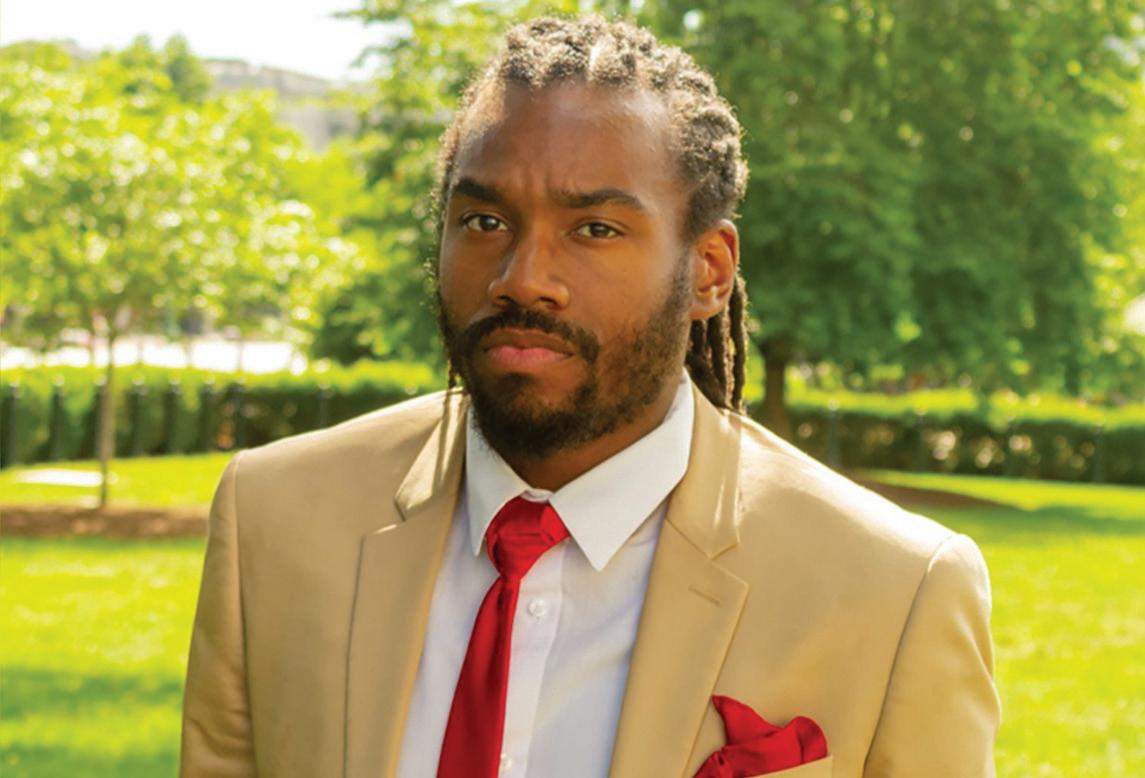
This ban can help business owners attract top talent, as there would be no restrictions on the mobility of skilled workers; thus, strengthening their businesses and enhancing their competitiveness.
With that stated, there will be several legal challenges to the implementation of the FTC’s non-compete ban.
U.S. Chamber of Commerce declares, “The FTC contends that by using regulation they can simply declare common business practices to be ‘unfair methods of competition’ and thus illegal. This is despite the fact that noncompete agreements have been around longer than the 110-year-old FTC and until now no one has suggested that they are illegal.”
what they believe is an overreach by the Federal Trade Commission on governing business transactions.
Those who have signed non-competes and wish to increase their salaries will either have to accept where they are or change industries and, possibly, locations. These are all unnecessary hassles that restrict a competitive market and
FTC estimates that the impact of banning non-competes could increase worker pay by $300 billion, and it can lead to 8,500 more new businesses each year. For Black entrepreneurs, the elimination of noncompetes can now open the door to new innovations, creativity, and fairer competition
Within 24 hours of the vote being published, both the United States (U.S.) Chamber of Commerce, the world’s largest business organization, and the Business Roundtable, an association of chief executive officers of America’s leading companies, filed suit against the federal agency.
In a statement released
t goes on to state, “If the FTC can regulate noncompete agreements, then they can decide to regulate or even ban any other business practice.
All without a vote from Congress.”

I believe that many more businesses, organizations, associations and groups will file lawsuits and lobby against
Furthermore, if any of the federal courts who hear the cases decide to grant a stay or a preliminary injunction on the ruling, the effective date could be postponed. Then, if the cases are appealed thereafter, the ruling would be delayed for many more months.
So, while this non-compete ban could take some time to go into effect, Black entrepreneurs should start positioning themselves to take advantage of it.




As the Minnesota Spokesman-Recorder approaches its 90th anniversary, you’re invited to commemorate this historic milestone by donating $90 to celebrate 90 years of continuous publication.
Your generous contribution will support our legacy of dedicated community empowerment through journalism and ensure our vital work continues into the future.
As a “$90-for-90” contributor (non-business), your name will be prominently displayed in our print and digital editions until the week of Aug. 10 — the date of our founding in 1934.
Please consider this unique opportunity to stand collectively with the MSR, honoring 90 years of tradition and community service. For inquiries or to join as a “$90-for-90” supporter, call 612-827-4021, visit our website, or email admin@spokesman-recorder.com.
Ray Seville Productions
Ray Seville Productions
Kimerlie Geraci
Kimerlie Geraci
David Fettig
David Fettig
Tracy Wesley
Tracy Wesley
The O’Neill Family
The O’Neill Family
Liam Cavin
Liam Cavin
Shirlee L. Callender
Your Name Here
Deanna Callender
Your Name Here
George Ewing
Your Name Here
Holly Andersen
Your Name Here
Deborah Montgomery
Your Name Here
Your Name Here
Your Name Here
Your Name Here
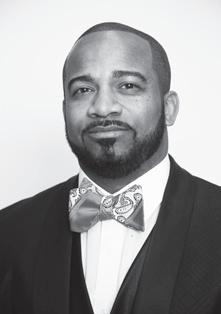
Y Name Here
Name Here
Your Name Here
Your Name Here
Your Name Here
Your Name Here
Your Name Here
Your Name Here
Your Name Here
Your Name Here
Your Name Here
Debbie Morrison
Your Name Here
Toweya Brown-Ochs
Your Name Here
Michael Diehl
Your Name Here
Gretchen Bratvold
Your Name Here
Debra Jones
Your Name Here
Clarence Jones
Your Name Here
Dotty Timmons
Your Name Here
Lee Friedman
Your Name Here
Marcia Murray
Your Name Here
Mark Ritchie
Your Name Here
Harlan Luxenberg
Your Name Here
Your Name Here
Your Name Here
Your Name Here

Your Name Here
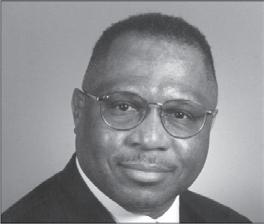
Your Name Here
Your Name Here
Your Name Here
Your Name Here
Your Name Here
Your Name Here
Your Name Here

Your Name Here
Your Name Here
Jeffery Young
Michele Livingston
Your Name Here
Mary Quinn McCallum
Your Name Here
Katie Izzo
Your Name Here
Amanda Brinkman
Your Name Here
Your Name Here
Your Name Here
Your Name Here
Your Name Here
Your Name Here
Your Name Here
Your Name Here
Your Name Here
Your Name Here
Your Name Here
Your Name Here
Your Name Here
Your Name Here
Your Name Here

Your Name Here
Your Name Here
Your Name Here
Your Name Here
Your Name Here
Your Name Here
Your Name Here

Your Name Here

Your Name Here
Your Name Here
Your Name Here
Your Name Here
Your Name Here
Your Name Here
Your Name Here
Your Name Here
Your Name Here
Your Name Here
Your Name Here
Your Name Here
Your Name Here
Your Name Here
Your Name Here
Your Name Here
Your Name Here
Your Name Here
Your Name Here
Your Name Here
Your Name Here
Your Name Here
Your Name Here
Your Name Here
Your Name Here
Your Name Here
Your Name Here
Your Name Here
Your Name Here
Your Name Here
Your Name Here
Your Name Here
Your Name Here
Your Name Here
Your Name Here
Your Name Here
Ceramics are in and around every aspect of our lives. Often defined by what it is not, a wide array of materials can generally be defined as ceramic so long as it is not metal, plastic or organic. From the dishes you eat from and off of, to the structure of your home, we encounter ceramic material innumerable times a day.
Whether for function or adornment, we often forget that a material we have become so accustomed to in its original form is, well, mud. Our employment of the ceramic material which is birthed from the wondrous mixture of earth, water, air and fire, predates the written word and continues to fascinate us.
Most of us have played with clay, likely sometime in childhood. Perhaps even more of us have closely looked at ancient sculptures and dishes in museums or have noticed in family homes old pieces of ceramic art and material held onto through generations. Many of these pieces tell us a great deal about our various histories.
For Osob Abas, it was during a casual scroll of ASMR videos on social media one day in 2022 when she stumbled across the craft of ceramic art. Her curiosity immediately peaked. She then searched for the soonest available beginner ceramic art class in Minneapolis, and from there her love of the art was in motion.
“I told myself no attach-
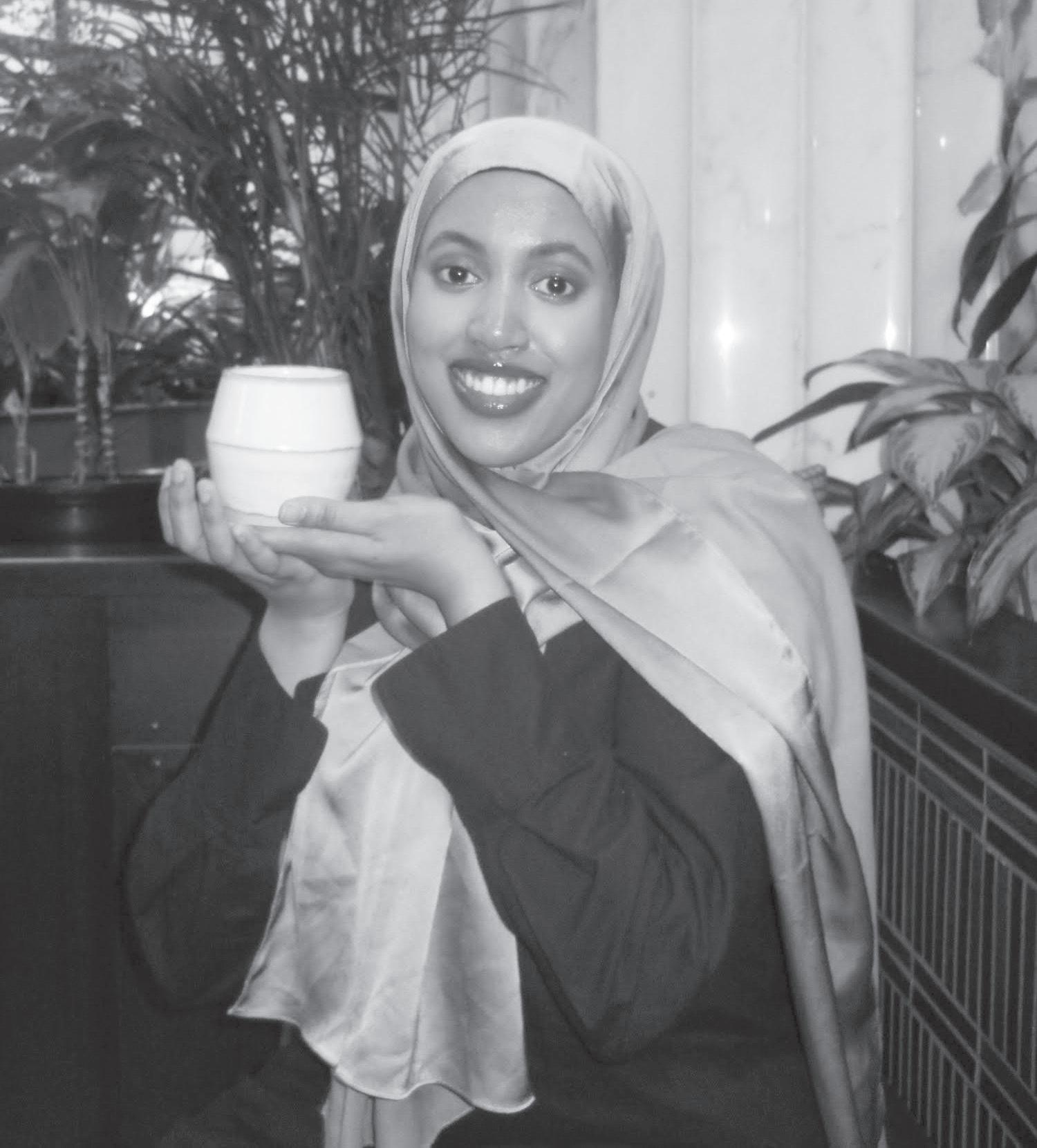
ments, have fun and don’t try to be perfect. That was the reason I ended up sticking with it longer than my other hobbies. I became obsessed with ceramics,” she said.
The trajectory of her education and early career in tech, being defined by math and science paired with her analytic default way of approaching life, left Abas over time yearning for a creative outlet that allowed her the grace to not be perfect.
“It was really really bad! Pottery is so humbling,” Abas laughed when asked how her ceramic art pieces looked when she first started taking classes on Saturday afternoons. Ososb has come a long way in her artistry over the
past two years.
From her easygoing instructors and her own hand-to-clay experience, Abas learned an array of quintessential tips for striving through life. No matter how many times her pieces came off the potter’s wheel in the opposite form she had hoped for, her instructor reminded Abas that “everything can be of use.”
Abas recently told her younger sister, who also recently took up ceramic art, that she should “Let the pieces go all the way through the process, Don’t crush it too early.”
For bowls, mugs and vases that took amusing shapes, Abas had adopted the mindset of “even if it’s ugly right now, I’ll glaze it and keep it.”
While her confidence in being more experimental improved and her perfectionist tendencies began to subside as she grew in her practice, Abas’s interest in the unique cultural roots of different ceramic styles also burgeoned.
Ceramic art styles that Abas has come across from countries such as South Korea, Oman and Somalia have her dreaming about traveling the world more to learn about the personal origins of the styles.
“Every culture has a ceramic root. I want to go back to Somalia where [ceramic] arts are being kept. Unless it has been broken, ceramics are a permanent fixture,” Abas said.
In Minnesota, there is a pottery scene within the Black Diaspora. Works of art that embrace African and African American cultural influence can be seen in vibrant craft markets. Abas’s engagement with markets and other Black artists is a part of her learning journey.
Despite the ancient origins of the Somali-style pottery
in her home, Abas jokes that at first her family and friends weren’t sure if taking up ceramic art was the best use of time and money. But they soon came to appreciate Abas’s new love and even looked forward to the pieces she would bring home, though they were a little overwhelmed with all of the new ceramic dishes filling
“Now gift-giving is a part of my love language. Whenever a gift-giving opportunity comes around, I throw a ceramic something in there.”
up the drawers and cupboards.
“Now gift-giving is a part of my love language. Whenever a gift-giving opportunity comes around, I throw a ceramic
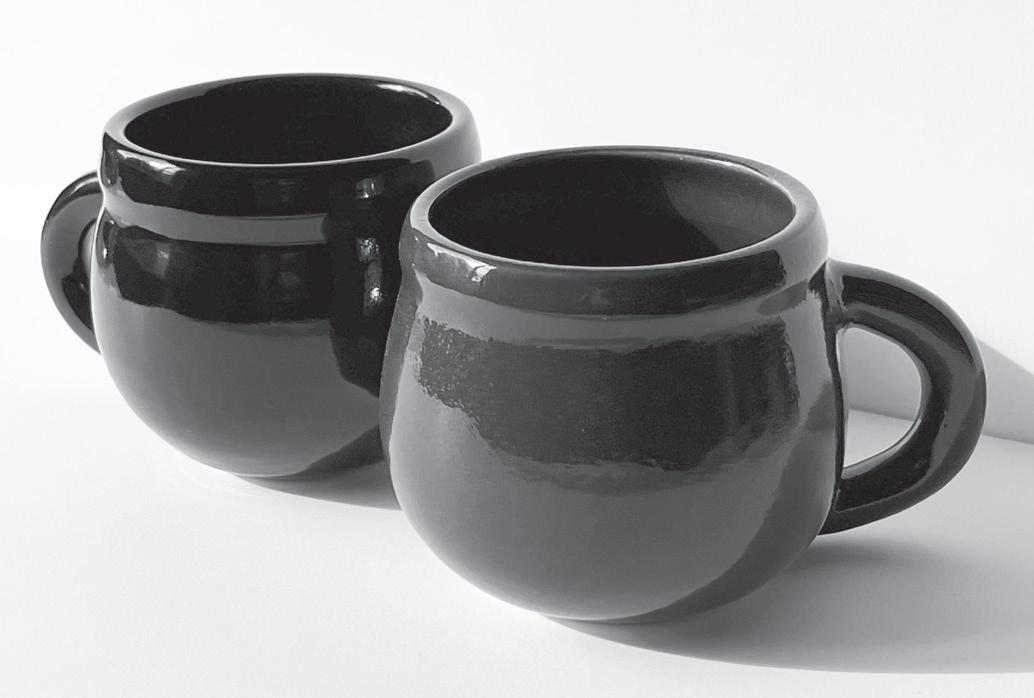
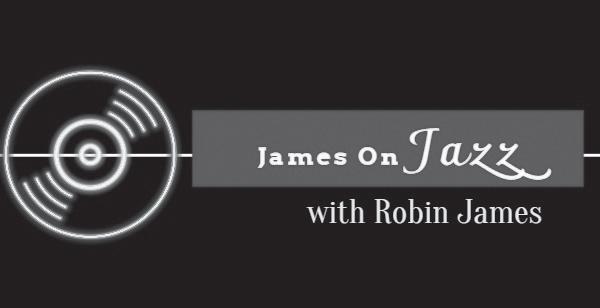 By Robin James Contributing Writer
By Robin James Contributing Writer
First off, there’s some jazz festival news to report as of late that jazz fans are going to want to know.
In Twin Cities Festival news, violinist Regina Carter will not be performing as a headliner after all due to a repetitive strain injury. Now instead, the festival has booked vocalist Kandace Springs on Saturday, June 22 at 6 p.m. with saxophonist Joe Lovano playing at 8 p.m. For more schedule updates, visit www.twincitiesjazzfestival.com.
Springs is a singer-songwriter who has performed in the Twin Cities a handful of times. Her new 2024 album entitled, “Run Your Race” from SRP Records is out now. Springs sings a lovely rendition of the song “Wind is the Wind” for the recording.
In other jazz festival news, the Selby Avenue Jazz Festival and Walker West Music Academy announced that the Walker West Music Academy will take over duties as the founder and director Mychael Wright has retired. Wright will continue on as a consultant for the next few years.
The festival will celebrate its 23rd year and promises to showcase more local acts including students and instruc-
tors. The free Selby Avenue Jazz Festival happens on Saturday, September 14.
On May 12, we learned the sad news that Grammywinning alto and soprano saxophonist David Sanborn passed away. A spokesperson confirmed that he died in Tarrytown, New York at the age of 78. The cause was complications from prostate cancer. He had a signature sound and inspired countless musicians of every genre.
On May 7, Harper Collins released a new book by author Larry Tye entitled “The Jazz Men: How Duke Ellington, Louis Armstrong, and Count Basie Transformed America.”
According to Tye, this is the story of three revolutionary American musicians, the maestro jazzmen who orchestrated the chords that throb at the soul of Twentieth-Century America. I plan on reading, learning and enjoying this new
American pianist and composer at a concert in New York City entitled “Duke Ellington at 125.”
He was born on April 29, 1899.
Under the musical direction of Ted Nash, who is performing in his last season with the JALC (sorry to see him go), the band played such Ellington favorites as “Black and Tan Fantasy,” “Moon Over Cuba,” and “The Tattooed Bride.” But the high point of the show came with “Concerto for Cootie,” featuring Ryan Kisor on lead trumpet.
There’s nothing like experiencing good music live, but from time to time a good recording can be equally enjoyable. Highnote Records has released the new album “Black Art Jazz Collective (BAJC): Truth to Power.”
The collective “formed as an ensemble of African American musicians celebrating Black culture and the origins of the music through original compositions with unapologetic
There’s nothing like experiencing good music live, but from time to time a good recording can be equally enjoyable.
book just as jazz author Dan Morgenstern suggests.
Speaking of Ellington, on May 3 the Jazz at Lincoln Center Orchestra celebrated the
pride,” according to founding member and tenor saxophonist Wayne Escoffery.
This all-star band includes other founding members Jeremy
something in there. I love seeing it later on in their houses,” she stated.
Abas’s experience as a ceramic artist has yielded surprising yet needed benefits in forming a meaningful sense of internal peace. “It helps with stress relief and anxiety. When I’m doing pottery, I’m headempty—it’s very therapeutic! I think a lot of people feel the same way after picking [ceramics] up,” she said.
Abas now has a studio dedicated to ceramic artistry called Made Solace, an ode to the comfort ceramics and pottery has allowed her. Though the studio’s beginnings are in her home, she is building momentum to establish a public space.
“Somali girls around my age and even younger reach out to me asking about how to get started and express that they would love to learn,” she said.
“In the future I would love to host workshops and classes. I know that because of cost, ceramic artistry can be inaccessible.”
Abas encourages people to take up the art form “even if it ends up not being the art for you. Try a class even if it’s for an hour,” Abas said. More broadly, relating to other curiosities we may hold, Abas calls on the reader to never fear trying.
Follow Abas’s Ceramic Art page on Instagram at @Madesolacestudio.
Binta Kanteh welcomes reader comments at bkanteh13@ gmail.com.
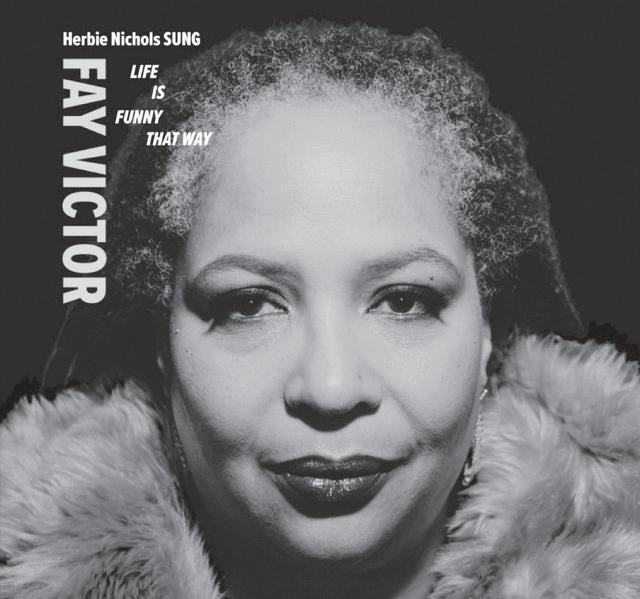
Pelt, James Burton III, Xavier Davis and Johnathan Blake, who is joined by current members Victor Gould, Rashaan Carter, and Mark Whitfield Jr. Listeners can expect 10 unique works that include tracks like “Lookin’ for Leroy,” “Code Switching,” and “Truth to Power.” Josh Evans, Wallace Roney Jr. and Vicente Archer also round out this powerful and talented collective. Vocalist, lyricist and bandleader Fay Victor has a
compelling new recording out now, “Herbie Nichols SUNG: Life is Funny that Way.” The album highlights the music of a late great composer that wasn’t very well-known except for writing the jazz standard “Lady Sings the Blues.”
What makes this album a landmark is the fact that this marks the first time that a full program of lyrics has been written and recorded for Nichols’ compositions. I go way back with Victor’s excellent
recording from 2004, “Lazy Old Sun (Live/Life in the Low Lands).”
Upcoming shows not to be missed at the Dakota are Ravi Coltrane, June 3; Bill Frisell Trio with the bassist Thomas Morgan and drummer Rudy Royston, June 5; and Fred Hersch, June 9. For ticket info, visit www.dakotacooks.com.
Robin James welcomes reader comments at jamesonjazz@ spokesman-recorder.com.
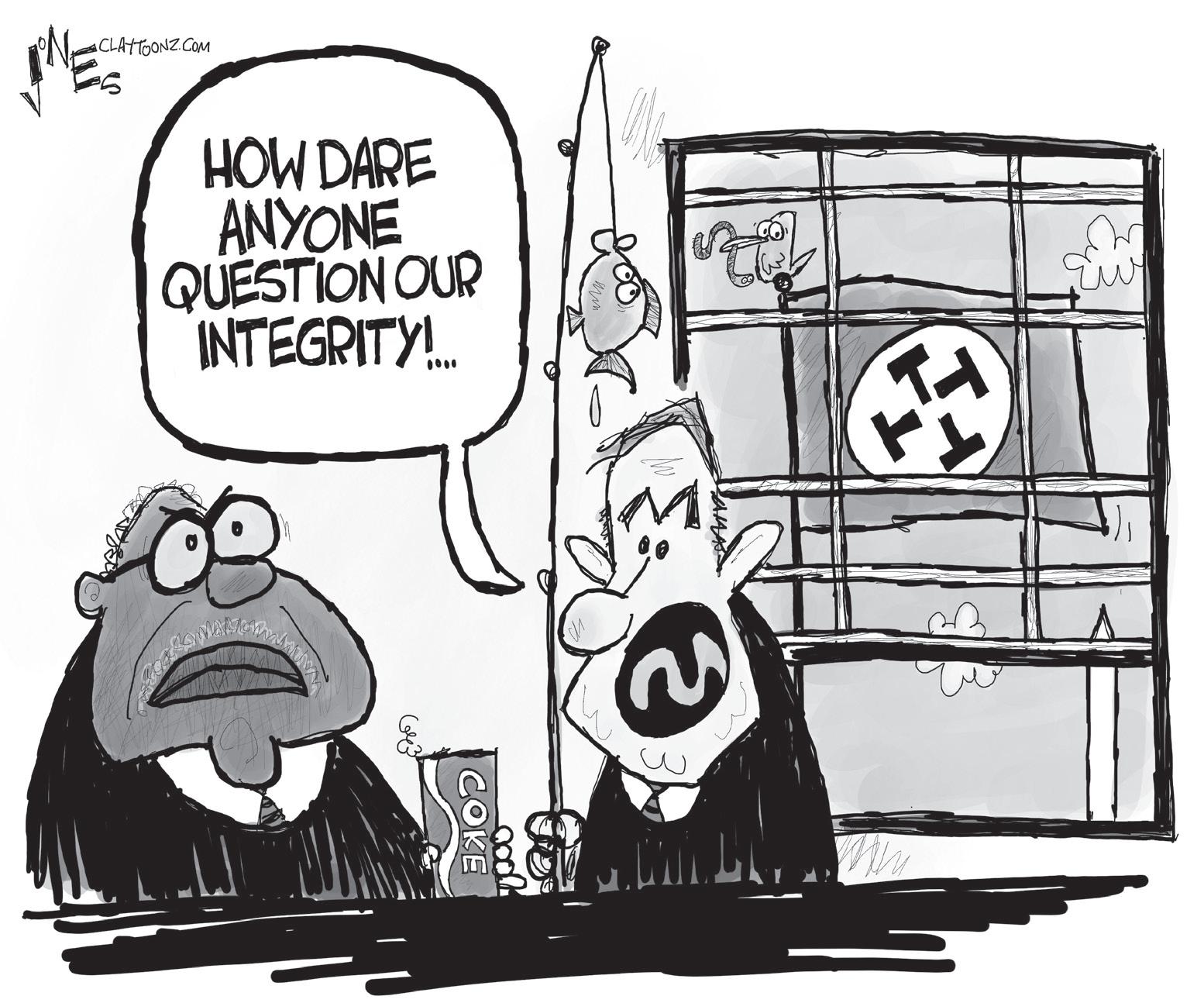
What conflict resolution experts wish universities knew about conflict
By Melinda BurrellThe protests roiling our campuses reveal a great deal about us as a country. Emotions are easily triggered, many of us are comfortable being angry, and most of us need help to handle conflict constructively.
We’re in a tumultuous year, likely with more protests ahead. Conflict resolution experts say that these protests, these conflicts, are an opportunity for growth. People are invested and want to act.
What are the phases and behaviors of escalating conflict?
First, conflict is dynamic. It often starts with one issue but changes and grows. We pull in more people to our side, and with more people, more issues are at play.
Second, emotions take over. We dig into our positions, becoming convinced we are absolutely right. We lose the ability to analyze and think creatively. We fall back on old conflict behaviors we learned as children, which are usually not constructive.
Third, communication decreases. We lose not only the ability to listen to the other but also the desire. When communication stops, we lose the most important key to deescalating and possibly resolv-
ing the situation. Fourth, we start to change and harden. As one side starts to use stronger tactics, the other side changes in response. People start using harsher language, engaging in violence, calling in police, or other conflict-intensifying actions. Here is what some experts wish universities knew about conflict.
Understanding conflict phases and behaviors is a big help in turning conflict into moments of productive conversation rather than escalating anger.
1. People—students, faculty, and administration alike— need to be heard. These are emotional issues that touch our values, our sense of safety, and our sense of identity. A first step is to create a forum for people to express themselves and be heard. And a first step for those forums is to have the participants co-create guidelines for how
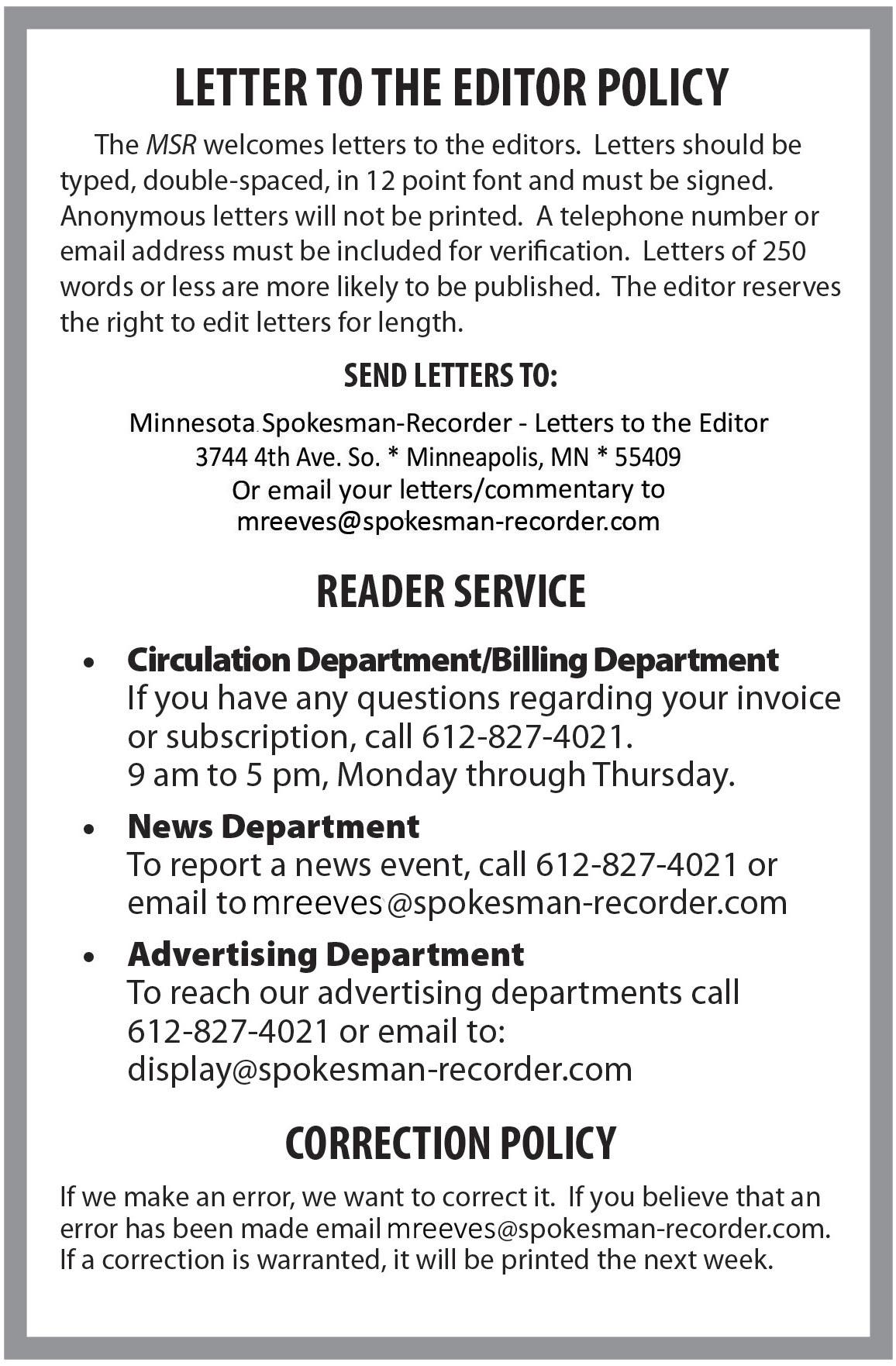
One of the biggest challenges in communities of color is higher rates of asthma and respiratory-related illnesses. I know this firsthand from growing up in the inner city of Buffalo.
My family lived near NYS Route 33, the Kensington Expressway, and so did my grandma, one of my uncles, and at least one aunt. As a kid, I snored really bad, and at times I experienced labored breathing. Of course, my physician said I had a mild case of asthma.
My younger brother had a more serious case of asthma. He carried an inhaler and had hospital visits when his asthma flared uncontrollably. I would not learn until after college the role that transportation and the environment built around my community had on my health and that of my family and friends.
the Natural Resources Defense Council (NRDC), little did I know that the pollution on that yellow school bus was worse than the air behind it.
I would not learn until after college the role that transportation and the environment built around my community had on my health and that of my family and friends.
COPD in certain neighborhoods.
As the CEO of Greater Washington Region Clean Cities, my office partners with Clean Fuels Alliance America to host the Environmental Justice Community Forum Series to discuss the Trinity Study, which effectively documents the positive impact of using biodiesel instead of diesel on public health. The findings state that lives will be saved by using biodiesel fuels in medium to heavy-duty vehicles.
Over 2,000,000 diesel vehicles are on the road, pumping pollution into the air and wreaking havoc on the public. In California, over 40% of the big trucks are using biodiesel, contributing to better health outcomes, especially in environmental justice communities.
submissions@spokesman-recorder.com
submissions@spokesman-recorder.com
submissions@spokesman-recorder.com.
to have constructive, rather than destructive, conversations.
2. Intimidation and force tend to increase resistance and resentment. Administrations that engaged with students, rather than resorting to intimidation, had better outcomes. Brown University and Northwestern University both opened dialogue with protesters, giving them formal opportunities to engage with the university boards.
Students felt they had an impact and, in return, worked to end the encampments. Kennesaw State similarly modeled a nonviolent approach. They created panel discussions for students, staff, and law enforcement. By allowing everyone to connect as well as appreciate each other’s perspectives and roles, the university eased the current crisis and built the capacity to withstand the next.
3. There is no need to navigate conflict alone. Many resources exist. These range from peace teams—civic groups trained to help deescalate protest-type scenarios—to community mediation or dispute resolution centers that have experienced mediators and facilitators to help design and lead dialogue sessions.
The National Association for Community Mediation has a searchable database of these organizations. The Association for Conflict Resolution and the United States Institute for Peace both offer tools for understanding conflict. The Bridging Divides Initiative lists groups that specialize in de-escalation, and the TRUST Network links groups working to mitigate political violence.
Emotions are likely to keep running high as we approach the November election. Understanding the importance of creating forums to listen to and of reaching out for help in navigating conflict is a good bet.
Melinda Burrell, PhD, syndicated by PeaceVoice, is a former humanitarian aid worker and now trains on the neuroscience of communication and conflict. She is with the National Association for Community Mediation, which offers resources for community approaches to difficult issues.
My elementary school was within walking distance of my home, but there was a school bus depot nearby, as well as a few factories, which contributed to the poor air quality in my neighborhood.
From 6th grade to 8th grade, I rode a diesel school bus to the other side of town. According to a report from
We also lived near a shopping center and park we loved to play at. However, we didn’t realize that the delivery trucks, park vehicles, and some of the diesel-fueled cars in the area were making me and others sick.
Perhaps that’s why so many people were carrying around oxygen machines and inhalers and diagnosed with lupus and
Let’s do more to use cleaner fuels in trucks, warehouses, marine, and agricultural vehicles throughout the U.S. Doing so will save lives!
Antoine M. Thompson is the CEO and executive director of the Greater Washington Region Clean Cities Coalition. He is a former New York senator and the first African American to chair the New York State Senate Committee on Environmental Conservation.
By Missy McDonaldGetting ready for work, I double-checked my ingredient list for the day’s classroom cooking activity: arborio rice, vegetable broth, onion, fresh portobellos, parmesan, and milk.
Learning to cook and then taste a mushroom risotto is not an everyday fare for a Twin Cities elementary school student. But the hearty taste of umami, defined as savory deliciousness, rarely fails to win over the most ardent skeptics, opening young minds to new tastes and fresh foods.
Midwest Food Connection, a Twin Cities-based nonprofit where I teach, has been engaging local youth in food education for over 25 years. A small staff with a big mission, we aim to inspire young people to deepen their connections with food by understanding how it relates to their health, the planet, and their community.
Healthy eating for schoolaged children has been a national conversation for years, but interactive food education is an especially unique opportunity to engage Twin Cities students.
A Minneapolis Star Tribune article published at the start of the school year, “Some highpoverty Minnesota schools are beating odds, while others struggle after pandemic,” noted that lost learning during the pandemic coupled with chronic high poverty rates in certain Minnesota schools has
taken a toll on state student achievement. However, bringing new concepts into the classroom offers one key to success. Gideon Pond Elementary, cited in the article as one such school beating the odds, embraced Midwest Food Connection’s urban farming unit last spring when first graders planted cucumber seeds, learned about pollinators through our bee dance, and tasted honeycomb.
Bringing new concepts into the classroom offers one key to success.
In any given week, I might plant seeds, cook stews, or sample global foods with students across the metro. From Bruce Vento Elementary on St. Paul’s East Side to Green Central Elementary in South Minneapolis, students get excited about healthy eating through cooking, tasting, gardening, art, and other interactive activities.
As I arrive at Bethune Arts School in Minneapolis for the day’s lesson, I unpack the ingredients I brought along. After starting the risotto during our lesson on the carpet, students examine a variety of mushrooms and describe to me what is placed before them.

A spirited debate breaks out: does one mushroom resemble a full head of cabbage or a rose-petal bouquet? Seamlessly, the differences and similarities of the mushrooms build critical thinking skills as students observe their shapes, sizes, and textures. Curious staff members drop by the classroom, lured in by the risotto’s aroma. Everyone is assured that the recipe will be handed out, allowing students to connect what they’ve learned at home.
While the risotto cooks, students apply their observations to a colorful pop-art mushroom painting project inspired by Japanese artist Yayoi Kusama’s bold, bright paintings of polka-dotted mushrooms.
At the end of the lesson, we gather in a circle to taste the long-awaited risotto. Upon tasting the dish, one doubtful child unexpectedly exclaims, “That was a mouthful of magic!”
As the class shared their final thoughts on mushrooms and the risotto, one student caught my eye from across the room while she slowly formed a heart symbol with her hands. I smiled back and modeled her heart formation with my own hands. This simple, heartfelt gesture quietly but effectively echoed a meaningful connection expressing a universal sentiment: food connects us all.
Missy McDonald is a food educator in St. Paul.

On May 17, 1954, the United States Supreme Court ruled that segregation in schools was unconstitutional. This year marks the 70th anniversary of this landmark case. Nearly a century after Brown v. The Board of Education, we still have work to do when Black children are more likely to attend schools that are grossly under-resourced, lack qualified teachers, and fail to cultivate Black genius.
In addition to these structural and systemic challenges, we still need to address the issues at the core of Brown v. Board which are the devastating impact of perceptions of Black intelligence and inferiority.
The Doll Test
The importance of self-identity was highlighted during the legendary U.S. Supreme Court
case, Brown v. The Board of Education, which effectively paved the way for ending racial segregation in public schools.
The plaintiffs, led by future U.S. Supreme Court Justice Thurgood Marshall, used the “Doll Test” (also known as the “Clark Test”) to show the damaging effect of racism on the development of Black children.
After decades of research, the test was created by two psychologists, Drs. Kenneth and Mamie Clark. Dr. Kenneth Clark’s extensive research focused on the inferiority complex experienced by Black students, while Dr. Mamie Clark’s studies focused on the perception of Black intelligence. Her master’s thesis was entitled, “An Investigation of the Development of Consciousness of Distinctive Self in Pre-School Children.”
Black children were asked basic questions about the intellectual capacity and worth of brown dolls in comparison to white dolls. Tragically, the over-
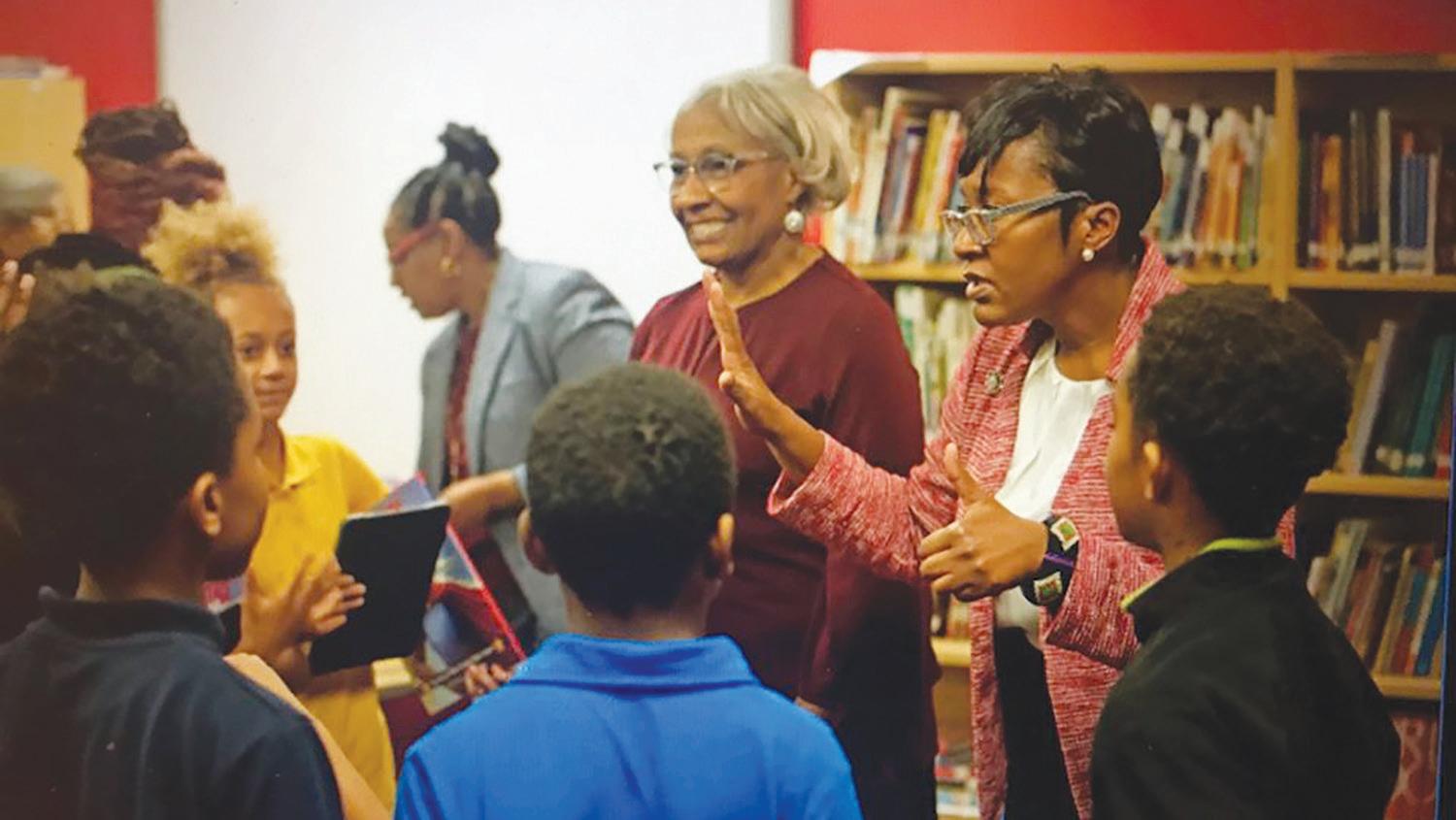
whelming majority characterized their Blackness as “looking bad” and not a “nice color.”
They were also asked which doll looked like them. For example, KJ an eight-year-old boy, identified the brown doll. When asked if he liked the doll, he responded, “No—I don’t like that one.” The results of this experiment were used to support the decision to desegregate schools and create a pathway to equal access to education.
The legacy of the “Doll Test” has continued over the years. In 1987, Black clinical psychologist Darlene Powell Hopson replicated the test. Two-thirds of the Black children tested preferred white dolls. In 2005, 16-year-old Kiri Davis repeated the Doll Test. Fifteen of the 21 Black children in the study preferred a white doll. These recent studies demonstrate the need for bolstering the confidence of Black children by reminding them that they are young, gifted and Black.
Leadership challenge
Cultivating Black genius is a call to action. It is an opportunity for all caring adults to support our children as they learn, grow and lead by serving as a First Educator. A “first educator” refers to the fundamental primary role that parents and caregivers play in a person’s early development and education. They instill essential life skills, morals and behaviors.
As a First Educator, you
Brown v. Board of Education, the Supreme Court decision that desegregated public schools, stands in the collective national memory as a turning point in America’s fight for racial justice. But as the U.S. observes its 70th anniversary, Brown also represents something more somber: It ultimately led to thousands of Black teachers losing their jobs.
Before Brown, Black teachers constituted 35% to 50% of the teacher workforce in segregated states. Today, Black people account for just 6.7% of America’s public K-12 teachers, even as Black children make up more than 15% of public school students.
As researchers focused on education policy, teacher diversity, critical research methods and teacher quality, we believe this is an important piece of unfinished business for a country still reckoning with systemic racism. In our view, the best way to fulfill Brown’s promise and confront the national teacher shortage is to hire more teachers of color.
Before Brown, Black children often were excluded from public schools or forced into underfunded and unsafe schools. Rather than accept these conditions, many Black communities pooled limited resources to build private schools of their own, buy curricular materials, and hire Black teachers.
Conditions were vastly unequal to those for white children at the time, but the presence of Black teachers
provided Black children with deep value and care.
Prior to 1954, there were about 82,000 Black teachers in the United States. A decade later, with hundreds of segregated schools closing, more than 38,000 Black teachers had been fired by white school leaders. As the communityrun schools for Black children disappeared following the end of legalized segregation, so too did the Black educators who staffed them.
Brown had mandated integration for students but said nothing of their educators.
In the decades since, parents, social justice advocates and researchers have documented the importance of teachers of color and pleaded for teacher workforce diversity. They argue that Black teachers support student learning and social and emotional development of children of color in ways that lead to better outcomes.
One study found the presence of Black math teachers increased the likelihood that Black students enroll in rigorous math classes. Another found that Black students taught by at least one Black teacher from kindergarten through third grade were 13% more likely to graduate from high school and 19% more likely to attend college than same-race peers who did not have a Black teacher. Still, the teacher workforce remains stubbornly whitedominated. Why? Research shows problematic certification measures, adverse working conditions, and discriminatory hiring practices contribute to keeping Black people from
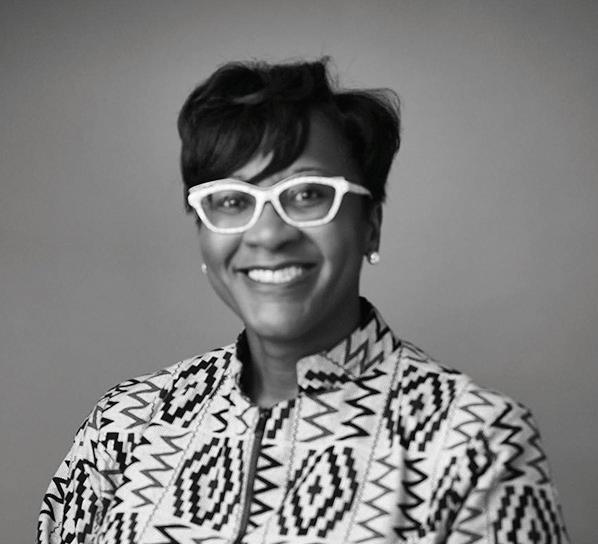
can help a child to discover their beauty and unveil their limitless potential. You will aid them in building a solid foundation of self-confidence that will support our children in their long-term growth and development. Marcus Garvey wisely stated, “If you have no confidence in self, you are twice defeated.”
Here are a few tools to ensure that our children are undefeatable:
Share positive affirmations
Create daily affirmations to remind your child about their beauty and brilliance. You can begin by helping your child to create three powerful “I am” statements. Examples include: I am strong. I am smart. I am beautiful.
Highlight images of Black heroes and heroes
Post and hang images within your home that reflect the beauty and great intellect of people of African descent.
Build a diverse home library
becoming teachers or keeping their teaching positions.
Obtaining a professional license is a critical milestone in a teacher’s career. Yet licensure policies and exams have kept Black teachers out, similar to race-based policies such as literacy tests that once prevented Black people from voting in the segregated South.
By several measures, standardized tests have been found to be biased against people of color. Research shows they contain culturally biased questions that privilege white test-takers.
What’s more, certification and licensing exams prevent the entry of Black people into teaching and determine which teachers are retained. As a result, from 1984 to 1989 about 21,500 Black teachers lost their jobs, according to one study of the impact of reliance on licensure exams and policies.
This gatekeeping function is especially troublesome because other studies show exam results are poor predictors of teacher effectiveness.
In one study, Black teachers in North Carolina with low exam scores nonetheless had positive outcomes on Black student achievement.
Black teachers have the highest rate of turnover among teachers, both white and nonwhite. When asked to reflect on their careers, longtime Black teachers saythey face constant racist microaggressions from fellow teachers, non-Black parents, and district personnel.
Black male teachers in particular say their expertise is overlooked and that they are forced to play disciplinarian for
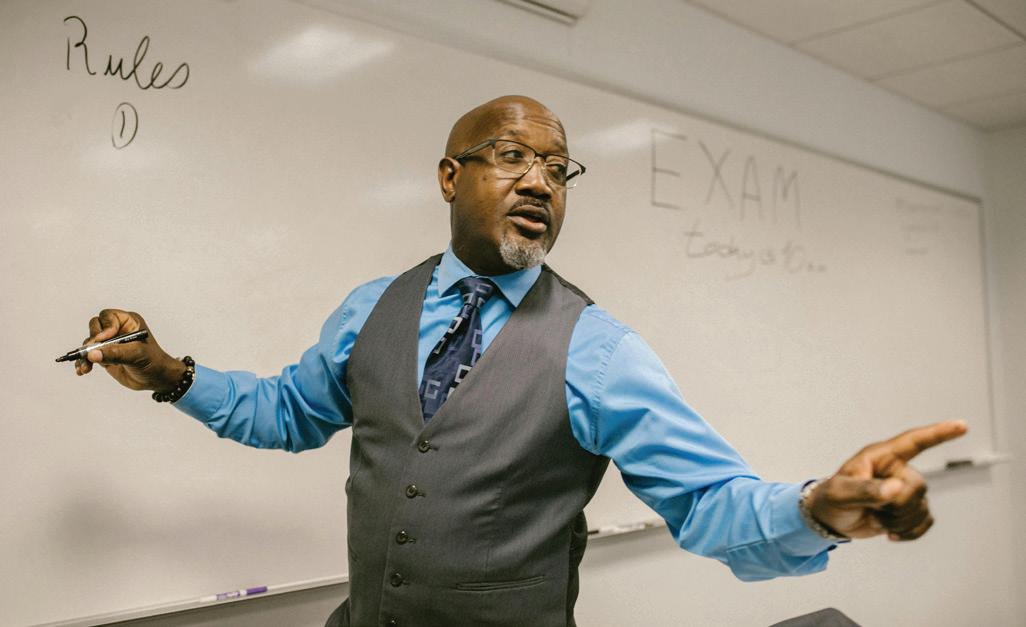
Black boys. Other studies show Black teachers are systematically sorted into schools with fewer resources, chronic turnover, and leadership instability.
Last-in-first-out hiring policies exacerbate the issue. Layoffs of this nature disproportionately affect the students most often taught by beginning teachers and teachers of color.
All of this makes teaching a precarious profession for Black
educators. Teacher hiring practices have made this cycle, and they can break it, too.
One study found equally qualified Black teacher applicants receive fewer job offers than white candidates. When hired, Black teachers are more likely to be selected by principals of color, and they too are a disproportionately small percentage of school leaders.
Principals say they seek teachers who best fit their
Invest in reading materials for the special young person in your life that feature Black children. These books will serve as a source of inspiration while aiding them in discovering the leader within. Suggested readings:
“Nap Time” by Lena Bee
“A Smile” by Isaiah Allen
“Tika Speaks” by Elise Washington
“Going Back to Rondo” by Mizz Mercedez
“My Mommy is a School Teacher” by Nasra Noor
“Can’t Nobody Make Sweet Potato Pie Like our Mama!” by Rose McGee
Share our PPGJLI Pledge
You can encourage the young people in your life to R.I.S.E. to new heights by learning these leadership characteristics: Respect, Integrity, Self-Awareness, Engagement
Dr. Tyner welcomes reader responses to dr.artikatyner@gmail. com.
Dr. Artika Tyner is a passionate educator, award-winning author, civil rights attorney, sought-after speaker, and advocate for justice. She is the founder of the Planting People Growing Justice Leadership Institute.
For example, post a picture of the legendary scientist Dr. George Washington Carver or the founder of Black History Month Dr. Carter G. Woodson. Hang artwork from African artists that embody positive images of Black children.
school culture. Yet research shows that definitions of “fit” rely on subjective traits and personal attributes, and often this means excluding Black teachers.
The nation faces a massive teacher shortage, but there is no shortage of potential teachers of color. Seven decades after Brown, it is a lack of willingness to hire and retain them that is missing.
Diana D’Amico Pawlewicz is an associate professor of education foundations & research, University of North Dakota. Andrea Guiden Pittman is a senior professorial lecturer, American University. Andrene J. Castro is an assistant professor of educational leadership, Virginia Commonwealth University. Marvin G. Powell is an associate professor of education, George Mason University.
This story was republished with permission from The Conversation.



Continued from page 12
“Slaying The Trolls” is an easy read, not academicspeak. It’s educational without browbeating the reader to death. The book is divided into three parts: 1) women can dominate sports, 2) the very unearned advantages in men’s sports, and 3) paying women what they are worth. When asked which part she suggests readers look at first, “I would probably say part two,” said Walker. “Let’s actually talk about the ways men write mostly about men’s sports, and women’s coverage is somewhere between three to five percent routinely.
“Let’s subsidize and in-
vest in and support women’s sports the way that men have supported men’s sports. In a way that cities have supported men’s sports, and government entities have supported men’s sports over the years.
“Treat women’s sports the same way we treat men’s sports. Then we’ll see what happens,” said Walker. Our interview naturally couldn’t escape discussing the “Caitlin Clark phenomenon” that seems to have mesmerized sports media and casual fans, who have falsely credited her with women’s basketball and the WNBA’s popularity these days.
“What we’re seeing is a racialized, gendered preference,” noted Walker, “for a particular profile of player being uplifted and supported in ways that
Continued from page 12
already have someone of color that they highly value, so that another one [hired] would be great,” said Epps. “I’m an African American. I always represent my mom’s side too. My mom was born and raised in Peru. So, I represent two minorities, and I just take a lot of pride in being able to be a voice for them.
“My hope is that I can continue to connect with people of my race but also people
even outside my race, and I just want to be able to be a voice and a source of inspiration and motivation for everybody,” said Epps. Epps comes to Minnesota after calling televised games last season for the Osceola Magic, Orlando’s G-League team, and concurrently served as a radio graduate associate with the Orlando Magic, working all home and away broadcasts. Epps also hosted the team’s “Around the NBA” scoreboard segment for all Orlando Magic away radio broadcasts. He got the Orlando job after
Continued from page 12
said King. “I want everyone to dream the dream,” including Blacks, Latinos and other POC, she pointed out. Jaques, who was part of the league’s first trade when Boston traded her to Minnesota in February, led all defenders in playoff scoring with five points in nine games. “It’s definitely been an incredible season,” she said. “This has all


similarly generational players haven’t been.
“Caitlin Clark is a great player with a skill set that we haven’t really seen,” she pointed out of the first- year WNBA player. “She fit a particular demographic makeup that are Western American women, girl next door, woman next door. Caitlin comes along and she fits that.
“I think what we can do is accept Caitlin’s greatness in this moment and welcome it, and also say that [other] players that are great, generationally great players like [Las Vegas’] A’ja [Wilson] who haven’t gotten the same treatment and [is] missing attention” from media, marketers, and others, added the co-author.
Walker says “Slaying The
connecting with two Orlando Magic representatives Epps met while attending the Black Sports Business Symposium in Atlanta just before his graduation. “I told them about my aspirations and they were telling me about the graduate associate program [which he had previously applied for]. I’ve made a good impression with them.”
His one season in Orlando proved to be an important stepping stone in his budding broadcasting career. “We need more people of color in sports,” Epps said. “There were times [in college] I was
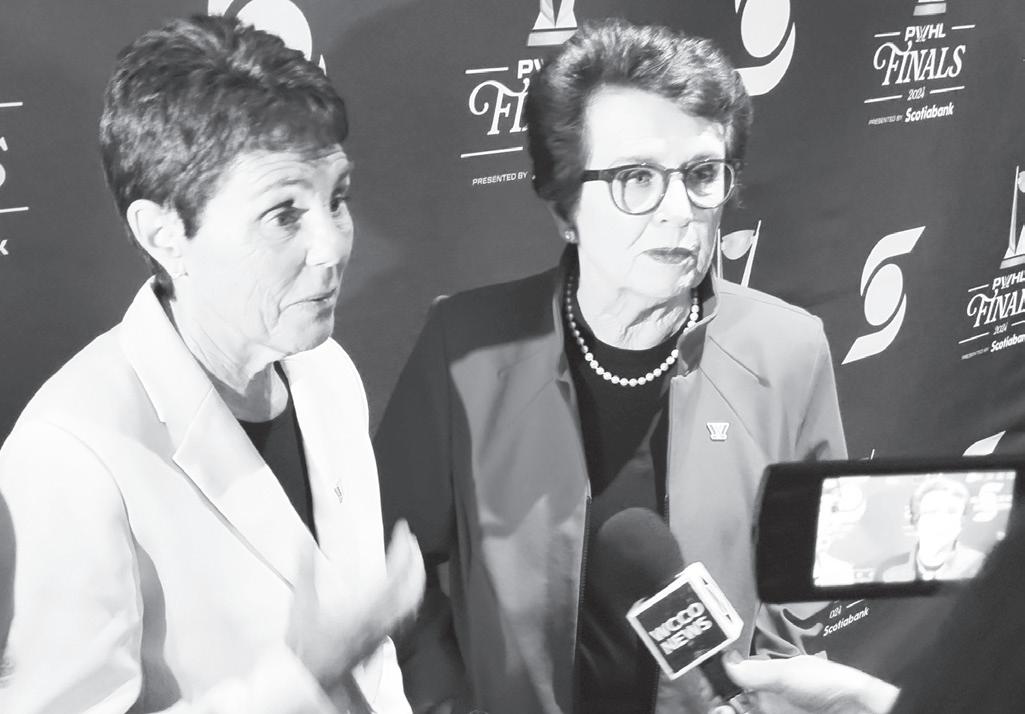
Trolls” is the perfect educational primer for sports fans and non-sports fans alike to debunk long-standing myths about women and women sports.
“We were mythbusters,” said Walker of herself and coauthor Berri. “This is a book that people should be able to look to over and over again. We’re going to keep updating it with fresh new data and research.
“If you follow the sport, if you’re in the sport and you hear people say ridiculous things,” said Walker of using her book, “share it, share the data, the facts, because I think the facts are important.”
Charles Hallman welcomes reader comments at challman@ spokesman-recorder.com.
the only person of color in either the broadcast booth or control room.”
Epps believes that he is far from being a finished product. “I feel like I’m a very strong broadcaster. I consider my style to be very energetic, very enthusiastic, but I’m also extremely knowledgeable.
“I want to be able to tell the stories of these players in this organization. It’s going to be a great season.”
Charles Hallman welcomes reader comments at challman@ spokesman-recorder.com.
been really cool and I’m grateful to be a part of everything.”
Concluded Subban, “It’s historic, and it’s crazy that I get to be able to tell my kids one day that I was a part of this.”
Read more on Kasten, Hefford, King and Kloss among others on PWHL’s first season next week.
Charles Hallman welcomes reader comments at challman@ spokesman-recorder.com.

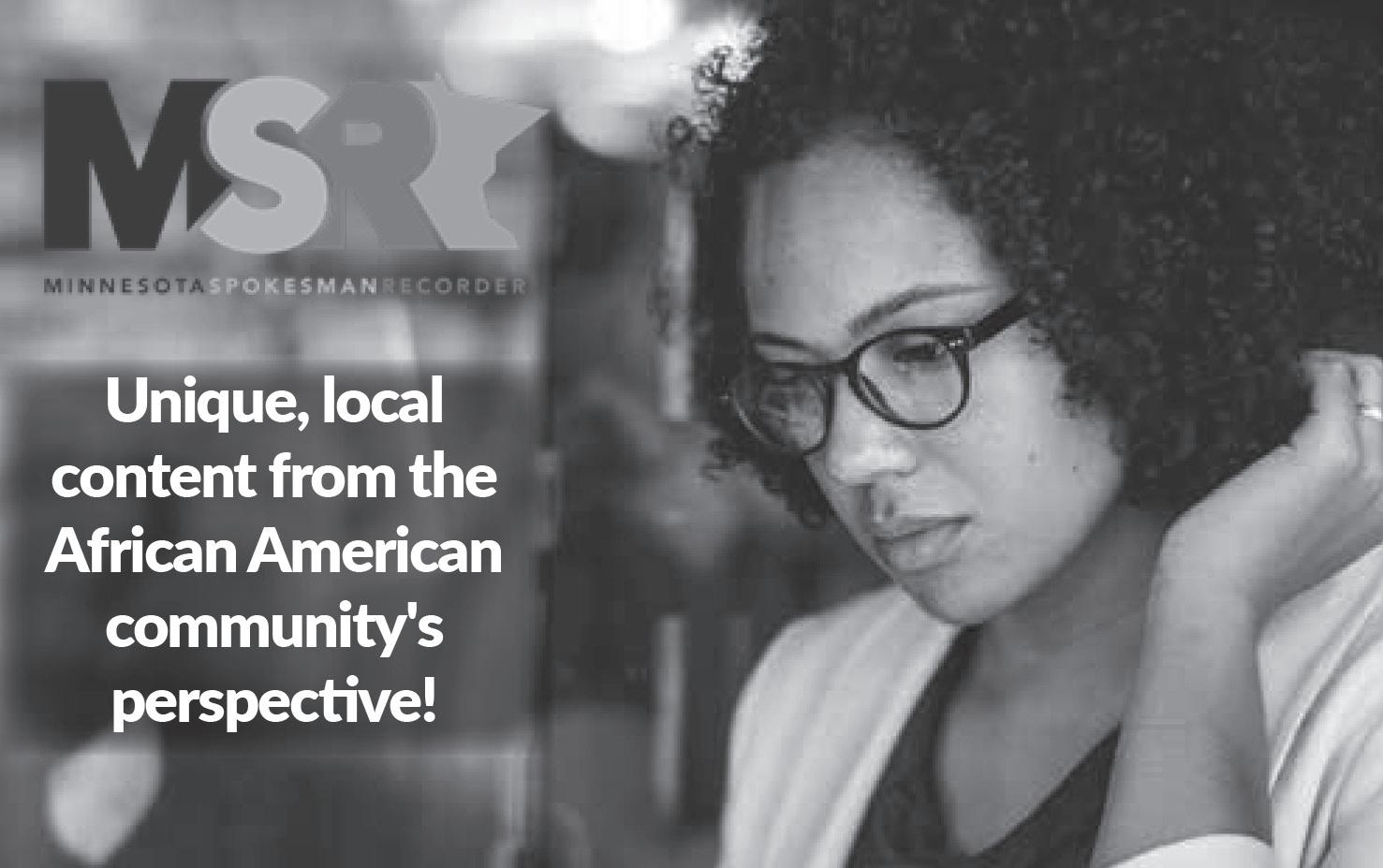


Women’s
first-ever championship down to final face-off Black Girls Hockey Club wants more girls of color in the gameBy Charles Hallman Sports Columnist
f successful this week, PWHL Minnesota will become only the third local professional sports team to win a league championship in this century. Minnesota and Boston are tied at two games apiece in the best-of-five Walter Cup series, with the deciding game scheduled for Wednesday, May 29 in Boston.
The Professional Women’s Hockey League (PWHL) began its inaugural season in January with six teams. Minnesota and Boston were the last two teams to qualify for the postseason and reach the league’s first-ever championship finals.
The league only has four Black players, and Minnesota leads with two—Sophie Jaques and Nikki Nightingale—along with Toronto’s Sarah Nurse and Mikyla Grant-Mantis of Ottawa. Nightingale is a
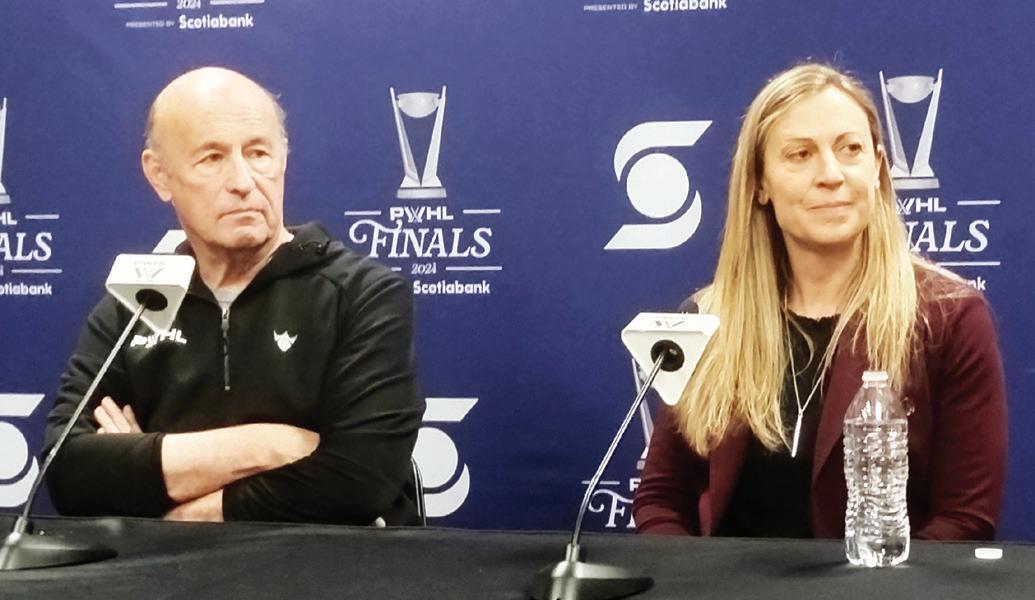
reserve player, and reserve players don’t travel with their teams on road trips.
The notably small number of Black players was first brought up by the MSR with PWHL Advisory Board member Stan Kasten back in January (MSR, January 17), who replied, “A good question, a fair question, and a very important question.”
Kasten and Jayna Hefford, PWHL senior VP of hockey operations, both spoke to the media last Friday prior to
Minor and Jones forever connected
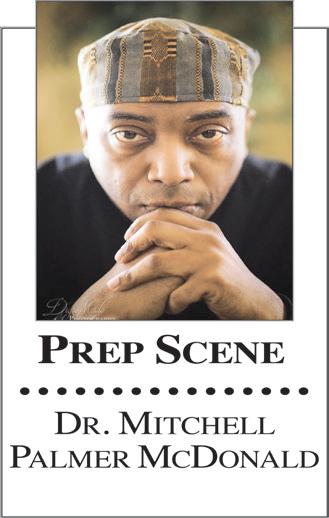
eonard Jones and Tryone Minor will forever be connected in the eyes of this columnist for many reasons. Not only were both the top high school track and field athletes of their time, but both had a connection that resonates after they met nearly 35 years ago.
It was at the 1989 state track and field meet on a warm June afternoon at White Bear Lake High School that Minor, a senior at St. Paul Central, and Jones, a junior at Minneapolis Patrick Henry, would compete for the Class AA triple jump title.

Minor had defeated Jones in the long jump the day before, so the stage was set.
Though Jones set the state meet record with a leap of 48 feet 9 and 3/4 inches, Minor won the event with a wind-

aided jump of 49 feet 8 inches on his final attempt.
The wind-aided jump prevented Minor’s winning leap from being recognized as a state record. Nevertheless, Minor led Central to the Class AA state crown.
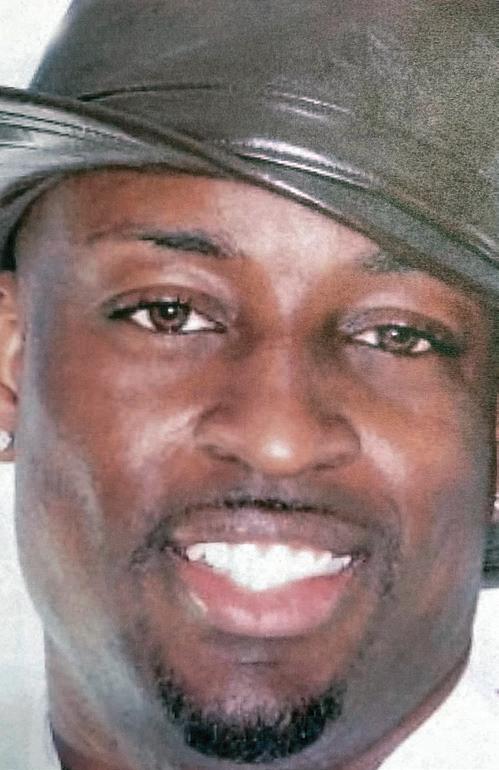
Jones would return the following season with Martez Williams to lead Henry to the 1990 Class AA title. All of their points came from jumps.
Both Jones and Minor are still making their marks today.
Minor went on to an outstanding track and field career at Drake University and the University of Minnesota. He is a physical education teacher at Osseo High School and the owner and founder of the F.I.T. Lab, an organization that focuses on physical fitness and health.
Jones, who became a Division III Track and Field AllAmerican at the University of St. Thomas, is an administrator at Park Center High School and a member of the Grammy Award singing group Sounds of Blackness.
Jones and Minor will live in track and field lore for years to come.
Dr. Mitchell Palmer McDonald welcomes reader comments at mcdeezy05@gmail.com.


that certainly includes on the diversity side.”
TSN rinkside reporter Raegan Subban, a former player herself, was the only person of color on the finals broadcasting team. She also is involved with the Black Girls Hockey Club, a nonprofit organization dedicated to promoting hockey to Black girls and bringing in more Black fans as well.
Game 3. This time Hefford took our diversity across-theboard question.
“I want everyone to dream the dream.”
“The first thing is representation,” she told the MSR. Although we haven’t seen that

omen’s sports are exploding. Women’s college basketball this season saw record crowds and boffo viewership numbers. This has been an upward trend for at least four years now. Yet there still are those trolls, mostly men, who continue to subscribe to and further the myths and misinformation about women’s sports.
“Treat women’s sports the same way we treat men’s sports. Then we’ll see what happens.”
“Slaying The Trolls: Why the trolls are very, very wrong about women and sports” (Kendall/Hunt Publishing) comes from co-authors and academics Nefertiti Walker and David Berri, who have
many Black faces at Minnesota games, “It doesn’t matter what market we’re in, there’s a sense of inclusivity in our buildings,” Hefford stressed.
“I think what we want to do is continue to do more for the game, for young girls, and I don’t think there’s any limits on who these young girls are.
“I think we approach the business side and our staffing the same way,” continued Hefford, “to bring people into the game and love the game. We
want to bring people in that represent different communities.”
Both Kasten and Hefford reiterated that the league in January hired Saroya Tinker, a former Black college and pro hockey player who retired just before the PWHL season began, as its manager of diversity, equity and inclusion initiatives.
“We’ll continue to try to find different creative ways to bring more people into the game,” stated Hefford. “And
Subban explained, “We give young girls that look like us an opportunity to play [and get] free ice -time] and free gear. We give them coaching from people that look like them as well.”
Tennis legend Billie Jean King and former World Team
Tennis Commissioner Ilana Kloss, both of whom also are PWHL Advisory Board members, told us on Sunday before Game 4 that hockey indeed needs more Blacks playing it.
“We need more girls of color,”
‘Slaying the Trolls’ debunks myths of women in sports
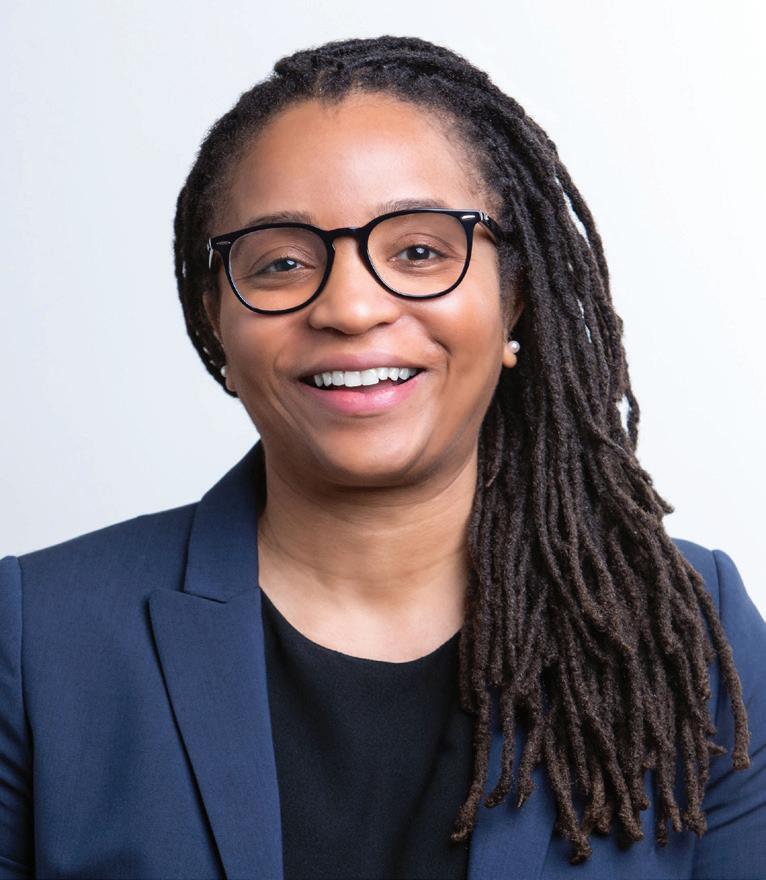
studied women and sports extensively. The two present the argument and empirical evidence to demonstrate that the trolls and what they are saying “is completely inconsistent with reality,” say the book notes.
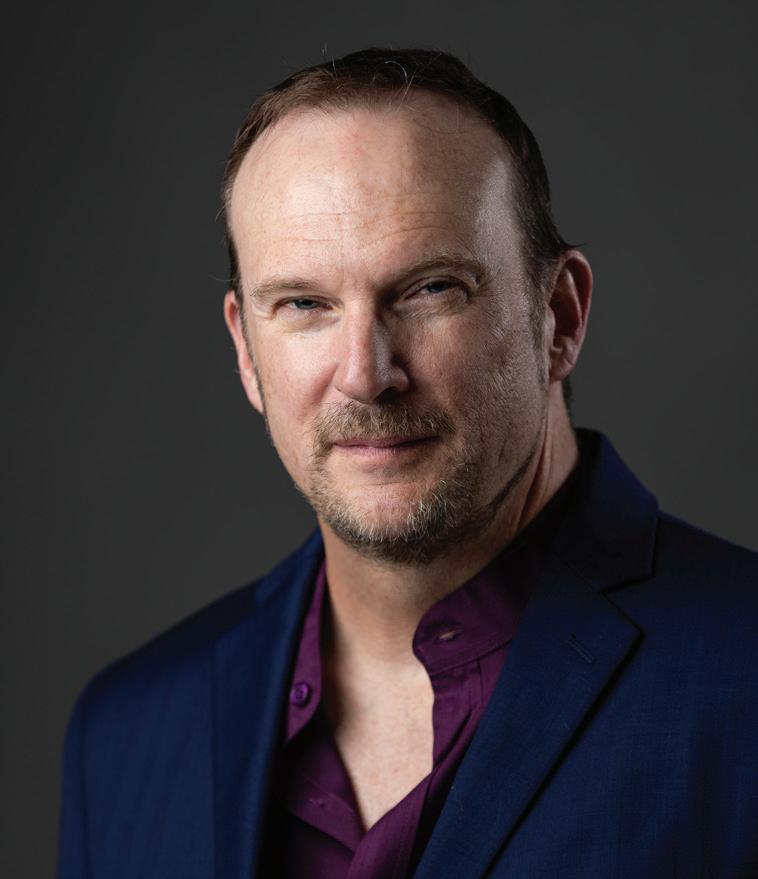
“We started [writing] the book in 2018. It’s been a long time coming, and to be honest, we couldn’t finish the book sooner,” noted Dr. Walker in an MSR phone interview. Walker, the deputy VP for academic affairs, student affairs and equity
for all four undergraduate University of Massachusetts campuses and its medical school, talked with us before on women and race issues and promised to speak with us again once the book was published.
New Lynx voice aims to inspire, motivate
endell Epps, the Minnesota Lynx’s new radio play-by-play voice, is a seasoned veteran at only 22 years of age, a year fresh out of college. Among other things listed on his LinkedIn page are four years of play-byplay announcing, sports podcast host, and his school’s director of broadcasting.
“Soon as I got to High Point (NC) University as a freshman in 2019, I was given the opportunity right away to do broadcasting for them,” recalled Epps, who called men’s basketball and lacrosse contests. He also made the Dean’s List and was student chapter president of the National Sports Media Association for two years.
All this, said Epps, “really just allowed me to become a better broadcaster and a better leader…go to the professional world and make that a seamless transition.”
“We
need more people of color in sports. There were times in college I was the only person of color in either the broadcast booth or control room.”
The Lynx in mid-May announced the hiring of Epps for its radio play-by-play upon returning to the radio airways for the first time since 2019. He will not only be heard on all 40 Lynx regular season games, but he’ll also create new and exclusive team content across all digital platforms throughout the WNBA season and off season. Also, it’s the first time in
